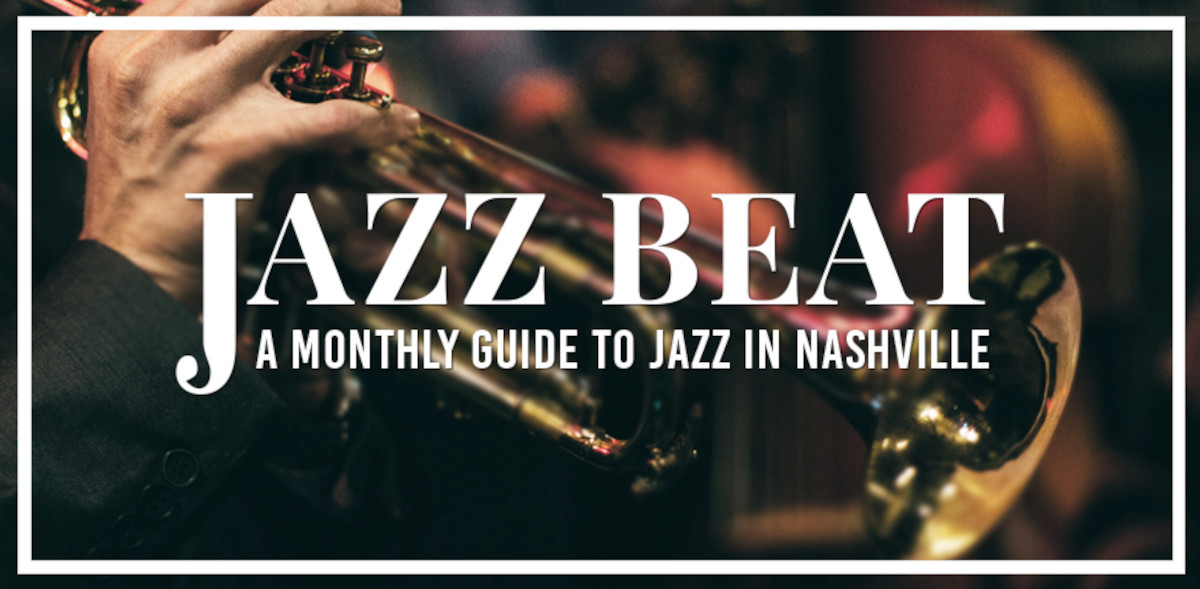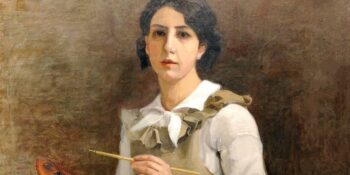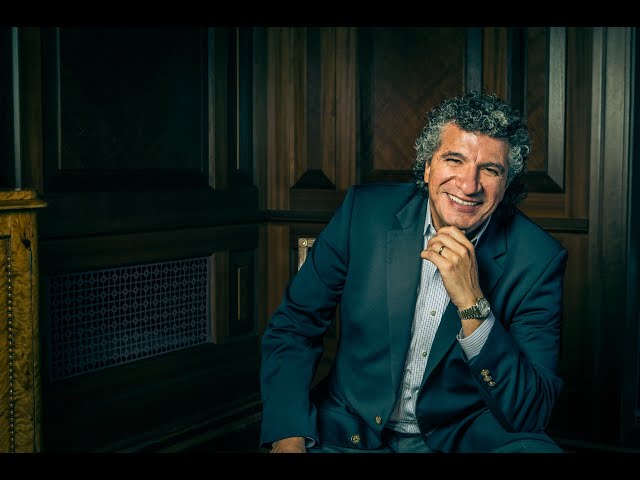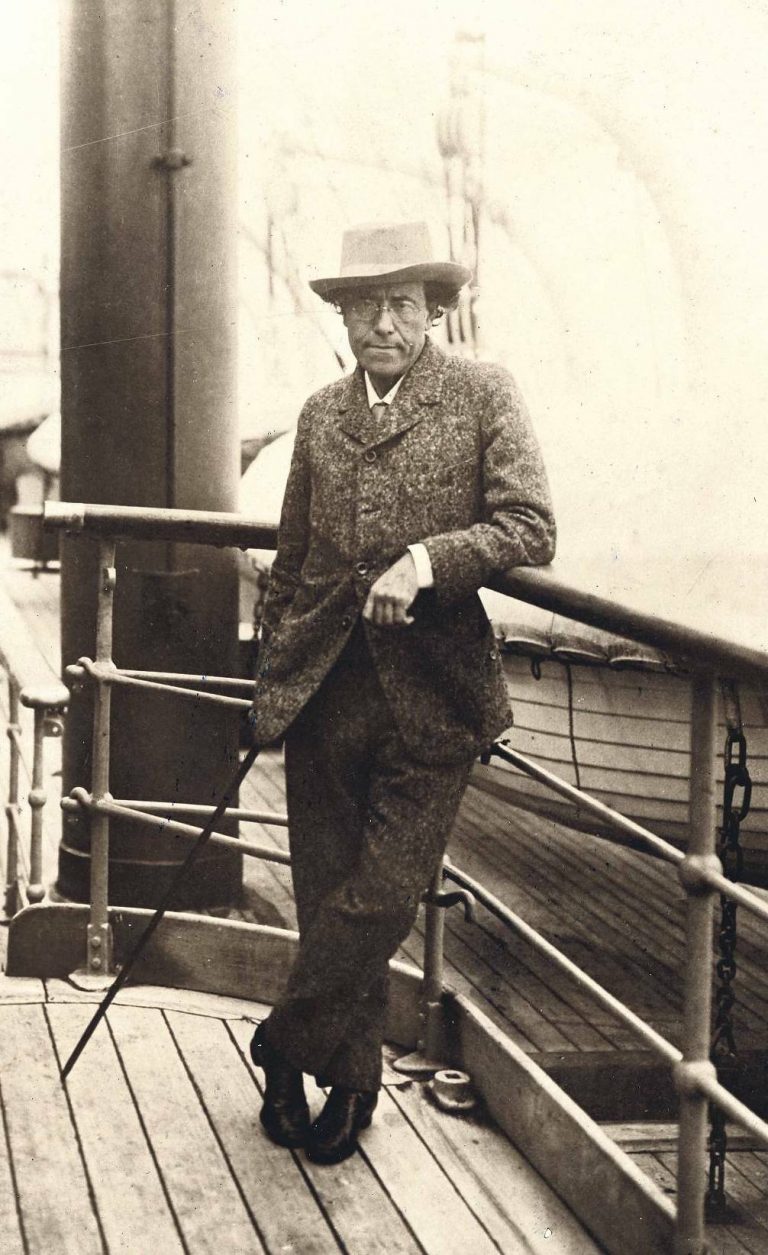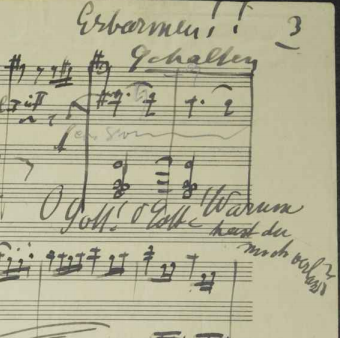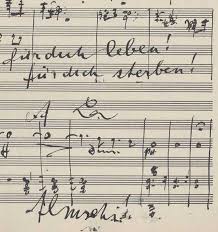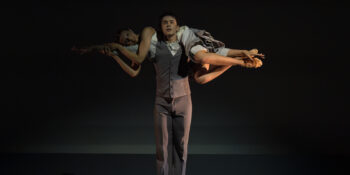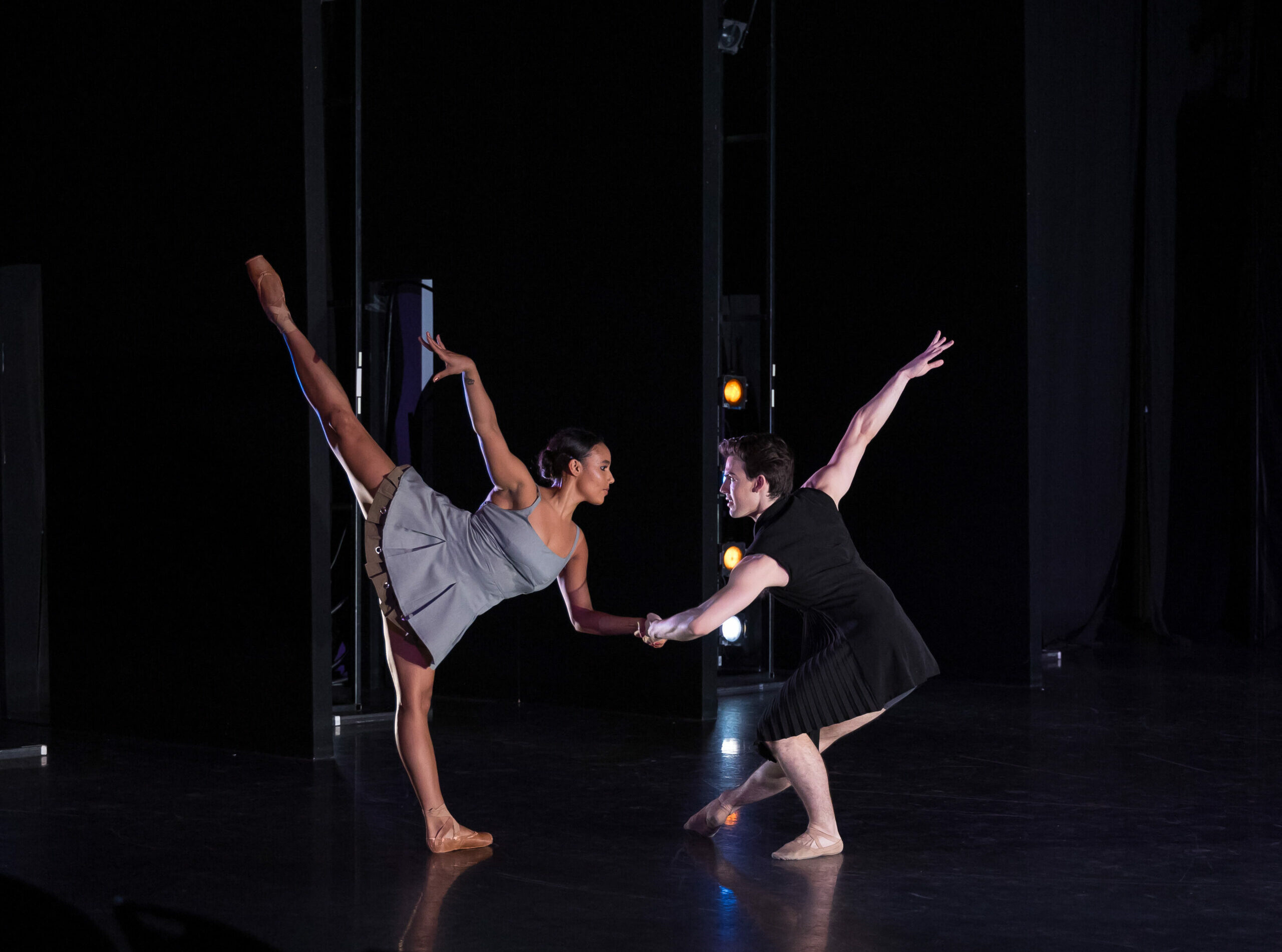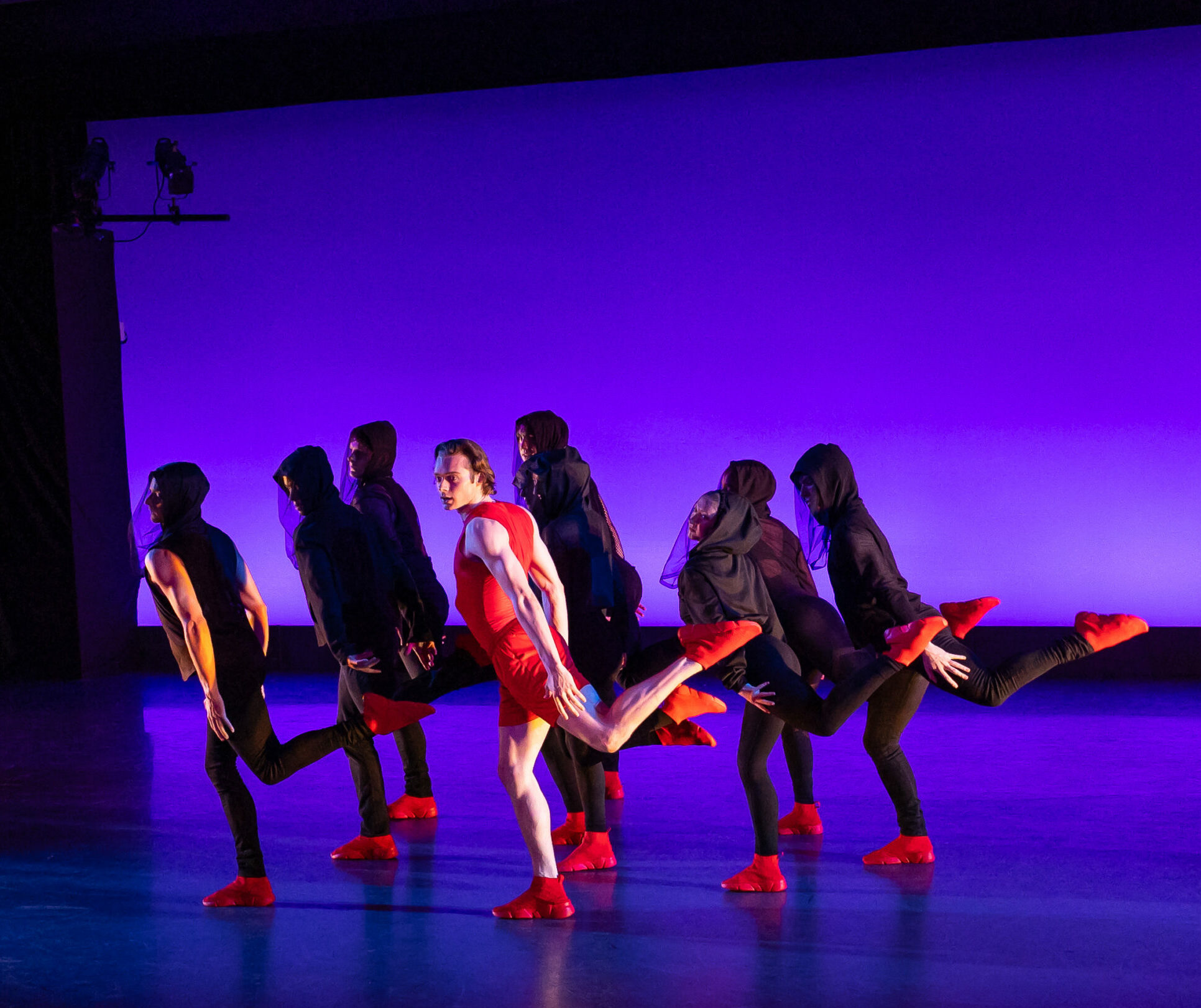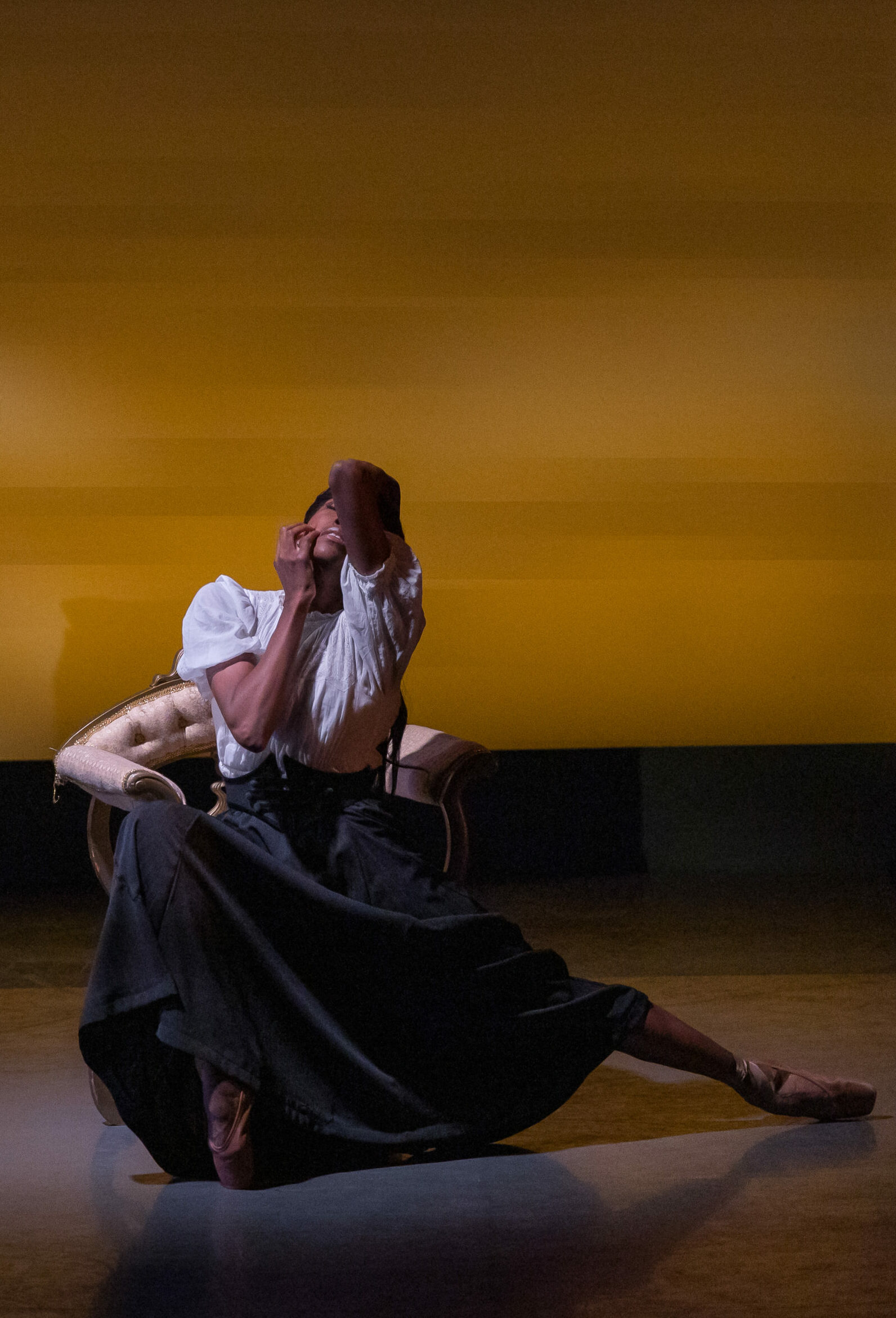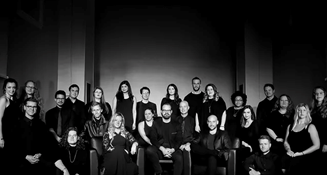The Jazz Beat: June, 2024
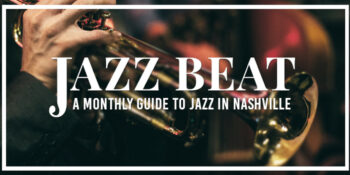
Hello, all, and welcome back to this regular column here at Music City Review. Here, we will update you with the most can’t-miss jazz events happening in Music City, so you can be sure to catch all your favorites, as well as discover new ones along the way. Get out there and support your local musicians and keep Music City thriving! We are always looking to promote great music that may not get the attention it deserves. Have an event you think should be included in the next issue? Email me at: JazzBeat@musiccityreview.com
This Month’s Highlights
Here you’ll find the shows and events this month that I think are the real standouts, unique events that you won’t find every day in the city.
Concurrence Album Release Show – Saturday, June 1 – 8:00 PM (Rudy’s) ($25)
Experimental duo Concurrence returns to the Rudy’s stage to celebrate the release of their new album, Indivisible. Praised by Nashville Scene as city’s “best jazz band that isn’t a jazz band,” experimentation and improvisation is at the heart of their music. They will be performing with drummer and Aaron Smith and special guests for this one-time album-release event.
Jacob Collier w/ Emily King – Sunday, June 2 – 7:30 PM (Grand Ole Opry) ($40+)
Prodigious young musical talent Jacob Collier makes a stop at the Grand Ole Opry on his tour supporting the release of Djesse Vol. 4, the final volume of his ambitious project Djesse. At only 25 years of age, Collier has already established an almost legendary status for himself in the music industry, due to his unique, boundary-pushing harmonies and deep knowledge of many musical genres. I think any fan of jazz fusion should have this show on their radar.
First “Jazz Night” at the Musician’s Union – Wednesday, June 5 – 7:00 PM (Free)
The local chapter of the Musician’s Union, Local 257, is starting a Jazz Night on the first Wednesday of every month, and this month’s is the very first. An all-star band has been assembled to perform a two-hour set. The band features Jim Ferguson on bass and leading the band, Pat Coil on piano, Joel Frahm on saxophone, and Danny Gottlieb on drums. This is a free event and there is parking behind the Musician’s Union building.
June Lee Presents the Harmony of Jacob Collier – Sunday, June 9 – 3:00 PM (Jazz Cave – NJW) ($35)
Building on Jacob Collier’s appearance in Nashville earlier in the month, longtime collaborator and leading expert in advanced music theory June Lee presents a masterclass exploring Collier’s innovative harmonies. The class will feature a Q&A section, and participants will even have the chance to schedule a one-on-one class with Lee himself. For anyone interested in building on their knowledge of music theory, this event is a must.
Ravi Coltrane ft. Gadi Lehavi & Ele Howell – Wednesday, June 12 – 7:30 PM (City Winery Main Stage) ($30+)
Jazz fans have an incredible opportunity this month to see Ravi Coltrane, son of the legend John Coltrane and saxophone virtuoso in his own right. A Grammy-nominated artist, Ravi Coltrane has released six albums as a bandleader, and recorded on countless other albums as a sideman, including with Elvin Jones, Kenny Baron, McCoy Tyner, and many others. This performance will also feature incredible musicians Gadi Lehavi on piano and Ele Howell on drums. Any jazz listener should put this on their calendar right away.
Entropy – Tribute to Jeff Beck’s “Blow by Blow” ft. John Fumo – Wednesday, June 12 – 9:00 PM (Rudy’s) ($15)
Jazz fusion group Entropy returns to the Rudy’s Stage, this time collaborating with trumpeter John Fumo for a tribute to Jeff Beck’s album Blow by Blow, a legendary fusion album that has inspired countless musicians and fans. Certainly breaking out of the traditional jazz sound heard most nights at Rudy’s, this should make for an exciting night of music.
Jazz on the Cumberland w/ the Sonja Hopkins Jazz Band – Sunday, June 16 – 5:30 PM
Nashville-based jazz vocalist and songwriter Sonja Hopkins provides this month’s Jazz on the Cumberland Performance. Known for her scatting abilities and vocal texture, Hopkins encompasses the tones of both nostalgic and contemporary jazz, as well as displaying her R&B and Gospel roots.
Robert Glasper (2 performances) – Monday, June 24 – 6:00 PM & 9:30 PM ($45+)
Legendary pianist, songwriter, and arranger Robert Glasper will perform two sets on the Winery’s Main Stage. Glasper is an accomplished jazz pianist in his own right, having been signed to Blue Note Records in his twenties, but his music transcends genre, keeping the jazz focus but weaving in many other influences. He has won five Grammy awards, out of eleven total nominations, as well as a number of other notable awards. Outside of his own work, he has produced or written music for artists like Brittany Howard, Mac Miller, and Talib Kweli, among many others.
Nigel Cathéy Quintet: “Timestamp: Legends of Sound Pt. 2” – Thursday, June 27 – 9:00 PM (Rudy’s) ($14)
Trumpeter and arranger Nigel Cathéy presents an evening of hard swinging music that pays homage to the jazz legends of the past who paved the way for the musicians of today. The band will present music from Lee Morgan, Kenny Dorham, Roy Hargrove, and Nicholas Payton. The band features Gus Arnold (sax), Alex Murphy (piano), Alex Mayweather (bass), and Joshua Cook (drums).
Bruce Dudley’s 5 Piece – Saturday, June 29 – 8:00 PM (Rudy’s) ($23)
Bruce Dudley is an accomplished and acclaimed jazz pianist who is a Steinway Concert Artist and has been performing jazz for over forty years with many recording credits to his name, both as sideman and bandleader. This quintet also features more of Nashville’s top talent, including Joel Frahm on saxophone, Chester Thompson on drums, Rod McGaha on trumpet, and Jon Estes on bass.
Arrington Vineyards
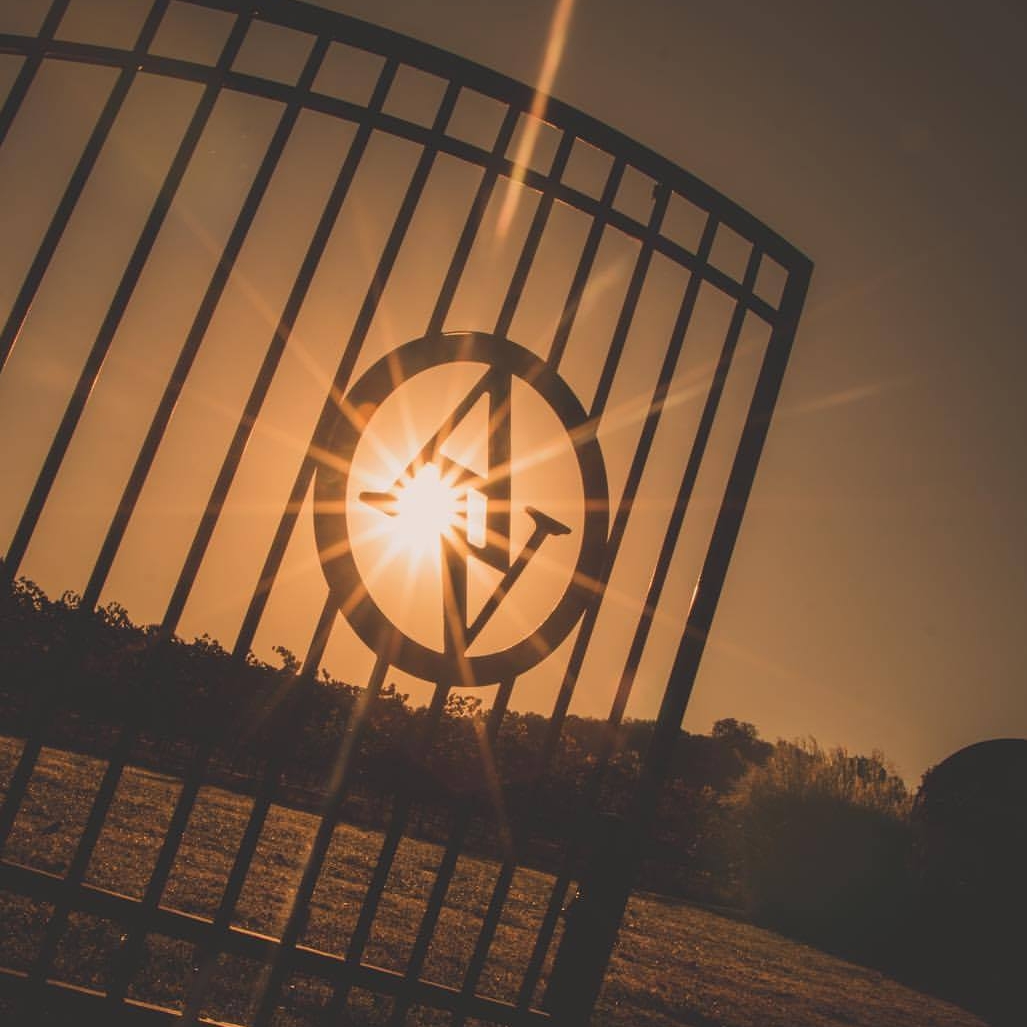
Music in the Vines Series – Every Saturday (3:00-7:00 PM) & Sunday (1:00-5:00 PM)
Starting in April, Arrington Vineyards will feature concerts of Jazz and Bluegrass every Saturday and Sunday. Acts range from Andrew Carney & the Essentials to Art Four Sale Band to the Reed Pittman Band. There will also be live jazz on Fridays (4:30-8:30 PM) for Arrington’s Food Truck Fridays!
City Winery Nashville
Nashville’s City Winery is a beautiful venue that consistently features top-talent acts that span genres from Jazz to Americana to Hip Hop. The below performances showcase a mix of several genres, but will certainly be of interest to any jazz audience. Enjoy these concerts accompanied by a stellar selection of wine and delicious bites.
The Lounge
Mark Harris II – Tuesday, June 11 – 7:00 PM ($22 advance / $27 day-of)
Prodigious keyboardist, multi-instrumentalist, arranger, and composer Mark Harris II graces the Winery’s Lounge to present his blend of smooth jazz, fusion, and R&B. Born in Los Angeles and raised in St. Louis, Harris has been surrounded by and grounded in music his entire life. He has toured the world and opened for Grammy-winning artist Gregory Porter. He has released two notable albums and three singles.
Monica Ramey – Saturday, June 29 – 7:00 PM ($15 advance / $20 day-of)
Midwest native but long-time Nashville resident vocalist Monica Ramey is a highly-praised jazz vocalist, acclaimed for her interpretations of tunes from the Great American Songbook. Her debut album, Make Someone Happy, featured Nashville legend Lori Mechem and her trio, and was highly acclaimed, as were her two following titles, Monica Ramey and the Beegie Adair Trio and Some Enchanted Evening, both also featuring prominent Nashville musicians.
Main Stage
Ravi Coltrane ft. Gadi Lehavi & Ele Howell (detailed above)
Robert Glasper (2 performances) (detailed above)
The Nashville Jazz Workshop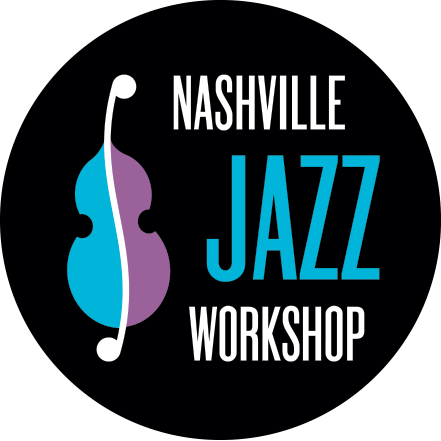
Moving on to Music City’s other great jazz venue, the Jazz Cave at the NJW is a venue with world-class acoustics, which consistently ranks in Downbeat Magazine’s list of Great Jazz Venues in the world. Tickets can be purchased through the Workshop website.
Jazz Cave
Jay White Presents “Hour of Power” – Saturday, June 1 – 7:30 PM ($35)
NYC-native Jay White is a multi-talented bassist, singer and composer whose music focuses on projecting a message of love and unity. His influences include a wide array of styles from Gospel to R&B and Jazz to Country. He has graced the stage with renowned musicians like Damien Escobar, Amos Lee, and Cory Henry, among others.
The Jon Cowherd Quartet – Friday, June 7 – 7:30 PM
Originally from Kentucky, pianist Jon Cowherd cut his teeth in New Orleans and New York City, bringing a unique blend of influences to his music. Perhaps best known for a long-time collaboration with drummer Brian Blade which resulted in the Grammy-winning group Brian Blade and the Fellowship Band, Cowherd has also collaborated with a number of other musicians across genres. This quartet will feature Aaron Sterling, Joel Frahm, and Mike Elizondo.
Alex Murphy: Tribute to Robert Glasper – Saturday, June 8 – 7:30 PM ($35)
Pianist and composer Alex Murphy will present an evening of music in tribute to one of the defining voices of modern jazz, hip-hop, and R&B, Robert Glasper, who as you will have noticed is also performing this month, at City Winery. Murphy has collaborations across many genres with artists like Nicholas Payton, Joel Frahm, Pharezz Whitted, and Gabrielle Cavassa.
June Lee Presents the Harmony of Jacob Collier – detailed above
Juneteenth – Saturday, June 15 – 1:15 PM (FREE)
To celebrate Juneteenth, the Workshop will present performances by three of the best Black musicians and artists in the industry today. First, trumpeter, composer, and arranger Emmanuel Echem will perform at 1:15. Then, at 2:30, soulful vocalist Piper Jones will deliver her mix of blues, jazz, and R&B. Finally, at 3:45, guitarist Wil Merrell will present a set of his music, known for its infectious energy.
Jontavious Willis – Friday, June 21 – 7:30 PM ($35)
Hailed as a rising start in modern acoustic blues, with high praise from the legend Taj Mahal to boost that reputation, Grammy-nominated guitarist Jontavious Willis blends many blues styles, including Delta, Piedmont, Texas, and Gospel blues. For any blues lover, or those interested in the roots of Jazz music, I think this performance is a must-see.
The Lori Mechem Quartet – Saturday, June 22 – 7:30 PM ($35)
Lori Mechem returns to the Jazz Cave with her quartet featuring Roger Spencer (bass), Andy Reiss (guitar), and Larry Aberman (drums). Mechem has a long and storied career performing alongside jazz legends like Dizzy Gillespie, Jimmy Smith, Anthony Wilson, Red Holloway, Terry Gibbs, among many others.
Rudy’s Jazz Room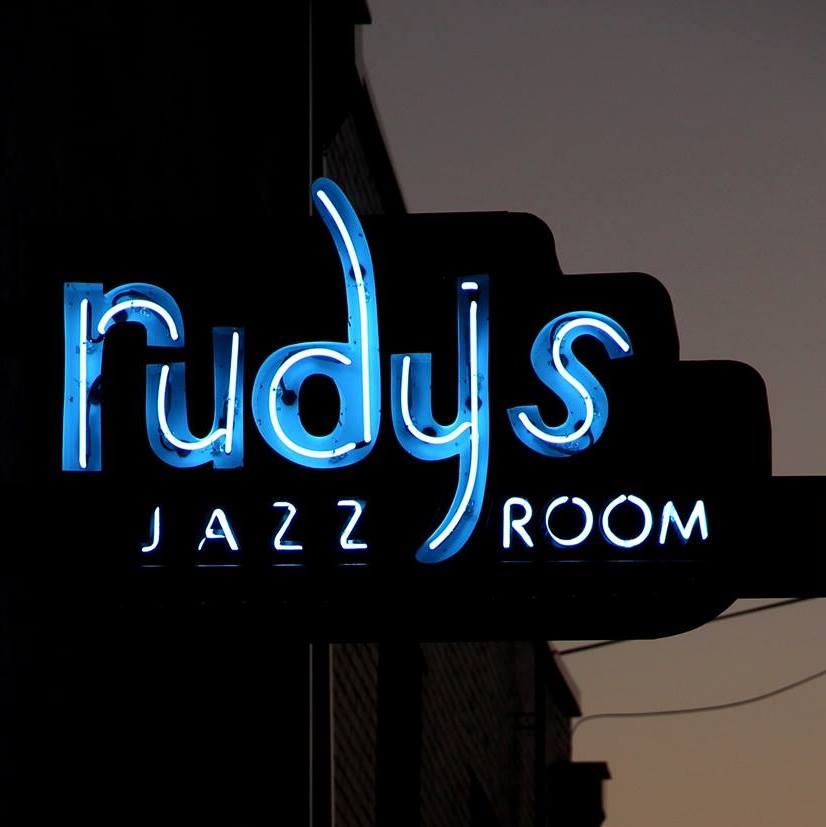
And now we move on to Nashville’s premier jazz club, with its cozy, intimate setting. I’ll start with some of the unique highlights for this month, then follow up with the great regular acts performing. Please note that some shows are one dollar cheaper if you purchase advance tickets. I have listed the door price for all shows.
Rudy’s Highlights
Below are the performances for this month that I’ve picked out as the real can’t-miss shows, some featuring touring artists from out of state, others featuring local artists giving specialized, unique performances. Below are the performances for this month that I’ve picked out as the real can’t-miss shows, some featuring touring artists from out of state, others featuring local artists giving specialized, unique performances.
Concurrence Album Release Show (detailed above)
Jeff Berlin – Saturday, June 1 – 5:30 PM ($15)
Considered one of the three greatest bassists of all time, alongside Clarke and Pastorius, Jeff Berlin presents a group featuring some of Nashville’s top-tier musicians including Jody Nardone on piano, Joel Frahm on saxophone, and Bob Harsen on drums.
Rebecca Carlson (2 performances) – Saturday, June 1 – 11:00 PM ($10) & Thursday, June 6 – 9:00 PM ($14)
Jazz and blues vocalist Rebecca Carlson has made a name for herself across the country, taking stints based in New York City, Tucson, Los Angeles, and now Nashville. An extensive touring and recording career has made her quite an in-demand performer.
Andy Reiss Quintet – Friday, June 7 – 5:30 PM ($15)
Grammy-winning guitarist Andy Reiss leads a stellar quintet of some of Nashville’s top musicians, including Joel Frahm (sax), Andrew Carney (trumpet), Chris Autry (bass), and Danny Coots (drums). Reiss, a member of the Time Jumpers, is a prolific recording session musician in Nashville, having recorded with greats like Slim Pickens, Pig Robbins, and Rebe McEntire, among others. His long career and life in music has given him a wide range of influences, from Jimi Hendrix and the Grateful Dead to Charlie Christian and Joe Pass.
Pascal Le Boeuf’s “Ritual Being” Jazz + Classical Ensemble – Friday, June 7 – 8:00 PM ($22)
Ritual Being returns to Rudy’s. Led by Grammy-nominated pianist and composer Pascal Le Boeuf, Ritual Being hybrid jazz-classical ensemble featuring some of Nashville’s top talent, including Annaliese Kowert (violin), Alex Krew (cello), Ethan Jodziewicz (bass), and Jordan Perlson (drums).
The Aaron Lessard Group – Saturday, June 8 – 11:00 PM ($10)
Nashville jazz/fusion guitarist Aaron Lessard will perform a mix of original compositions and covers in a trio format featuring Brian Allen on bass and Mark Raudabaugh on drums.
The Karas Committee – Wednesday, June 12 – 6:00 PM ($12)
Josh Karas’s jazz fusion group returns to Rudy’s, playing an exciting mix of Karas’s high-energy compositions and arrangements, and their interpretations of classic fusion tunes from the likes of Herbie Hancock, Chick Corea, and Stevie Wonder. Karas has been noted as one of the most promising up and coming pianists on the Nashville scene, and his group has already played for sold-out crowds.
Entropy – Tribute to Jeff Beck’s “Blow by Blow” ft. John Fumo (detailed above)
The MF Art of Listening – Friday, June 14 – 5:30 PM ($16)
This highly improvisational group makes its return to Rudy’s, led by drummer Marcus Finnie, who has assembled a highly talented group of musicians to create this unique experience. Finnie himself has toured the world with a host of artists, including Keb’ Mo’, Taj Mahal, Donna Summer, Billy Preston, and many more. Also in the band are trumpeter extraordinaire Rod McGaha, who practically needs no introduction, having performed with Max Roach himself; John Pahmer, a pianist with a remarkable career that has made him a respected figure in the industry; and Ryan Madora, Nashville-based producer, educator, writer, and bassist. She has toured and recorded with artists like indie rock icon Jennie Lewis, as well as Molly Tuttle, Zayn, and more.
Joe Barna & Sketches of Influence (2 performances) – Friday, June 14 & Saturday, June 15 – 8:00 PM ($21)
Performing both nights this weekend, drummer Joe Barna leads his group Sketches of Influence. Barna has performed with Grammy-winning artists, and has recorded over ten albums as sideman and six as bandleader.
Wendy Burns & Paul Childers Present “Jazz’s Greatest Duets” – Saturday, June 16, 2024 ($18)
Two of Nashville’s great talents present an evening celebrating the greatest tunes in jazz, some dating back all the way to the turn of the 19th Century. Paul Childers is a versatile guitarist who blends the rock and blues styles of Hendrix and Vaughan with the traditional jazz guitar. He has toured internationally for many years and opened for acts like Vince Gill, Robert Cray, and Leann Rimes. Wendy Burns is a multi-talented vocalist and flutist who has won awards such as Best Female Jazz Artist from the Mississippi Music Foundation, and been inducted into the Nashville Academy of Local Musicians Hall of Fame.
The Kelli Cox Trio – Wednesday, June 19 – 6:00 PM ($12)
Long-time Nashville staple pianist Kelli Cox returns to the Rudy’s Stage with her trio featuring Chris Autry on bass and Luke Woodle on drums.
Caravan Tales – Thursday, June 20 – 9:00 PM ($14)
Caravan Tales blends a wide variety of influences from across the world for a unique sound. The French and Afro-Caribbean background of arranger and guitarist Jerome Degey blends with the Latin and Dominican heritage of Giovanni Rodriguez, and the two are further complimented by Willie Barthel, drummer from Colombus, and Charles Treadway, considered one of Nashville’s top organists.
Sarah Jane Nelson – Friday, June 21 – 5:30 PM ($20)
A native of Little Rock, Arkansas, Nelson is now based in Nashville after a long stint in NYC starting when she was 17. She has been highly praised as a first-rate singer in many publications, including The Miami Herald, RAVE LA, Hollywood Reporter, and the LA New Times.
Shaun Munday – Saturday, June 22 – 5:30 PM ($12)
Bassist and composer Shaun Munday returns to Rudy’s presenting his unique original work which centers the bass as the melodic instrument. Highly praised for his technique and melodic composition, Munday has shared the stage with Mary Wilson, Andra Day, The Wailers, and more.
The Andrew Carney Quartet – Wednesday, June 26 – 6:00 PM ($12)
Nashville-based trumpeter flugelhornist Andrew Carney performs with his quartet. Carney has had a prolific recording and performing career, having performed with artists from Pink to Aretha Franklin to Ariana Grande, and recorded on commercials for Google, Nutra Systems, among others.
Andy James & The Jon Cowherd Sextet – Wednesday, June 26 – 9:00 PM ($15)
Vocalist Andy James performs with the all-star band of the Jon Cowherd Sextet, offering originals as well as unique interpretations and arrangements of classics. The band features Jon Cowherd (piano), Alex Acuña (percussion), Jordan Perlson (drums), James Genus (bass), John Ellis (reeds), and Chico Pinheiro (guitar).
Nigel Cathéy Quintet: “Timestamp: Legends of Sound Pt. 2” (detailed above)
Bob Harsen Trio – Friday, June 28 – 5:30 PM ($14)
Accomplished drummer Bob Harsen performs with his trio. Harsen is a Berklee graduate and has toured and recorded with a wide array of artists from Max Bennett to John Patittuci to Bette Midler and more.
The Desmond Ng Group – Friday, June 28 – 11:00 PM ($10)
Hailing from Phoenix, Arizona, Ng is a new trombonist on the scene in Music City, and now performs with his original group.
The Ted Ludwig Quartet – Saturday, June 29 – 5:30 PM ($15)
Ted Ludwig is a highly praised seven-string guitarist, acclaimed in publications like All About Jazz Magazine, JAZZIZ Magazine, Offbeat Magazine, and more, and has been a consistent part of the jazz scene in New Orleans for almost thirty years. He has performed with contemporary legends from Ellis Marsalis to Peter Bernstein to Mundell Lowe and more.
Bruce Dudley’s 5 Piece (detailed above)
The Sofia Goodman Group ft. Joel Frahm – Sunday, June 30 – 6:00 PM ($15)
Award-winning Nashville drummer and composer Sofia Goodman and her group collaborate with Joel Frahm, acclaimed tenor saxophonist originally of New York City, now based in Nashville as well. Goodman’s sophomore album, Secrets of the Shore, won Best Jazz Album of 2023 by the Nashville Scene, and she has performed with greats such as Roland Barber and Pascal Le Boeuf. Her next album will be out later this year.
Rudy’s Regulars
Regi Wooten & Friends – Wednesday, June 5 & Wednesday, June 19 – 9:00 PM ($15 Cover)
Coming from a distinctly talented musical family, Regi Wooten is one of the most innovative and dynamic musicians on the scene today, pushing the boundaries of the traditional genres. Equally at home playing Hendrix as Wes Montgomery, Wooten assembles a group of some of Nashville’s best musicians to offer a night steeped in funk, jazz, soul, blues and rock.
Chris Mondak Band – Friday, June 7 – 11:00 PM ($10)
Nashville-based bassist and composer Chris Mondak leads his band performing jazz standards as well as Chris’s energetic hard-bop style compositions.
Jody Nardone Trio – Saturday, June 8 – 5:30 PM ($17) & Saturday, June 22 – 8:00 PM ($22)
Prominent Nashville pianist Jody Nardone brings his trio to Rudy’s for a classic jazz set. With a growing national reputation, Nardone seamlessly shifts from the “whispered beauty of Bill Evans to the percussive flights of McCoy Tyner.” (Michael McCall, Nashville Scene)
Don Aliquo – Multiple Performances
One of Nashville’s most active and accomplished saxophonists, Aliquo will be performing with his trio on two occasions this month, in both trio and quartet formats.
Don Aliquo Quartet – Saturday, June 8 – 8:00 PM ($23)
Don Aliquo Trio – Saturday, June 15 & Friday, June 21 – 11:00 PM ($10)
Sully’s Swingin’ Sunday Supper – Sunday, June 9 & June 23 – 6:00 PM ($12)
Every other Sunday, Rudy’s features a Sunday dinner, with one of Music City’s top bassists Jimmy Sullivan leading a swingin’ jazz band featuring rotating special guests, for which a unique dinner special is served just for the show.
Dana Robbins Quintet – Monday, June 10 – 6:00 PM ($12)
GRAMMY-winning saxophonist Dana Robbins pays tribute to the Soul Jazz sound of the late 60’s and early 70’s, celebrating artists such as Les McCann, Eddie Harris, Jimmy Smith, and more. Robbins has either recorded or performed with many artists, including Keb’ Mo’, Aretha Franklin, Taj Mahal, Keith Urban, and more. Her band features David Santos (bass), Wes Little (drums), Phil Hughley (guitar), and Darius Mines (piano/B3 organ).
Cliff Richmond & the CliffNotes – Thursday, June 13 – 9:00 PM ($14)
Guitarist and vocalist Cliff Richmond’s band always features some of Nashville’s top talent, and presents a great blend of soulful, swinging, and funky jazz.
Geoff Pfeifer Quartet – Friday, June 14 & Saturday, June 29 – 11:00 PM ($10)
Playing a mix of Wayne Shorter tunes and originals, Geoff Pfeifer brings gritty, edgy, genuine NYC-style jazz to Rudy’s stage with his Quartet.
Pat Coil (2 performances)
Accomplished Nashville pianist Pat Coil will be performing twice this month, each with a different group, detailed below:
Pat Coil Trio w/ Don Aliquo – Saturday, June 15 – 5:30 PM ($15)
Pat Coil’s “Music For Humans” – Friday, June 28 – 8:00 PM ($23)
Re-Evolution – Mondays, June 17 & 24 – 6:00 PM ($12)
This five-piece band is heavily influenced by classic jazz cutting-edge artists like Thelonius Monk, Wes Montgomery, John Coltrane, Bill Evans, and more. The band consists of Brian Cornish on saxophone, Regi Wooten on bass, Daryl Johnson on drums, Adam Charney on guitar and Alex Murphy on piano.
Stephanie Adlington – Friday, June 21 – 8:00 PM ($23 Cover)
Another frequent visitor to the Rudy’s stage, award-winning vocalist, songwriter and vocal coach Stephanie Adlington is known as the “Siren of the South,” with an “unrivaled” take on the Great American Songbook.
Jonathan Wires Quartet – Saturday, June 22 – 11:00 PM ($10)
Prominent Nashville bassist and educator Jonathan Wires leads a quartet featuring Adam Davis on guitar, Steve Pardo on sax, and Madison George on drums.
Giovanni Rodriguez & 12 Manos – Every Monday – 9:00 PM ($15)
A favorite on the Nashville Latin and jazz scene, multi-instrumentalist Giovanni Rodriguez presents an electric night of salsa, along with his band consisting of Rodriguez (bass/vocals), Melvin Macias (piano/vocals), Jesus Agreda (Timbales), Lorenzo Molina Ruiz (Trumpet), and Manuel ‘Manotas’ Ramierez (multi-Percussion).
Hot Club Gypsy Jazz – Every Thursday – 6:00 PM ($12)
Every Thursday night, Rudy’s honors its New Orleans and French roots by celebrating the vibrant music of Gypsy Jazz. These nights feature a variety of small groups either led or curated by New Orleans native Brook Sutton, all performing music in the style of the great Django Reinhardt and Stephane Grapelli. The bar will feature French Quarter-inspired cocktails as well as gumbo and beignets. Come out for as authentic a night as you can get without a trip to the French Quarter.
Rudy’s Jazz Jam – Every Sunday – 9:00 PM ($10)
I couldn’t make a list of Rudy’s events without including a shout-out for the regular weekly Jazz Jam the club hosts every Sunday night. Whether you are a jazz musician and you want to jam with your fellow artists, or you just want to come and enjoy what the local talent has to offer, the Jazz Jam is a great way to end your weekend.
Sambuca Restaurant
Sambuca is a New American restaurant in Nashville’s Gulch district, featuring nightly live music. Below are the appearances that will interest the jazz listener!
Thea Danos (2 performances) – Saturday, June 1 – 7:00 PM & Thursday, June 20 – 6:00 PM
Nashville native Thea Danos specializes in jazz and Brazilian bossa nova, a style she is intimately familiar with as she has spent extensive time in Brazil performing and perfecting her Portuguese singing. Danos likely will be the closest one can get to authentic Brazilian bossa nova in Nashville.
Stephanie Adlington (3 performances) – Saturday, June 8, Sunday, June 23 & Saturday, June 29 – 11:30 AM
Featured above in the Rudy’s section, Adlington is an award-winning jazz vocalist.
Ben Graves – Monday, June 10 – 6:00 PM
An incredibly eclectic and versatile musician, Ben Graves has performed music in genres from classical to jazz to hard rock, weaving all of this experience together into a unique style.
Ryan J Driscoll – Tuesday, June 11 – 6:00 PM
Accomplished vocalist and entertainer Ryan J Driscoll has been acclaimed for his compelling renditions of tunes from the Great American Songbook.
Steve Roper – Monday, June 17 – 6:00 PM
For three years, Steve Roper was the band leader and music director for the Steven Roper and the B.B. King Allstars band at the B.B. King Club here in Music City. His primary genres are jazz and blues, but his skillset extends well beyond these styles to R&B and even country.
Amanda Raye – Wednesday, June 19 – 6:00 PM
Although her style is a blend of soul and country, Raye’s jazz influence certainly shines through. She will present an evening of original music.
Sarah J – Wednesday, June 26 – 6:00 PM
Known for her energetic personality and audience interactions, Sarah J presents a powerful blend of R&B, contemporary jazz, and pop music. She accompanies herself on both piano and guitar.
Leif Shires – Thursday, June 27 – 6:00 PM
Modern jazz trumpeter Leif Shires will perform twice this month. Shires, who has performed with many artists including Tom Jones, the Secret Sisters, Kelly Lang, and many others, now presents a traditional, straight-ahead jazz sound that is sure to be a great accompaniment to a delicious meal.
The Underdog Nashville
The Guthrie Trapp Trio – Every Monday – 8:00 PM ($10)
One of Nashville’s preeminent guitar talents will perform several times at the Underdog. More blues and country than jazz, Trapp’s intricate and highly technical guitar playing will surely interest those who love the technicality of jazz music. His trio features Jordan Perlson on drums and Tim Marks on bass.
The Jack Ruch Organ Trio – Every Thursday – 8:00 PM ($10)
Guitarist Jack Ruch, organist Adam Wakefield, and drummer Nioshi Jackson make up this soul and blues trio. The music you’ll hear here makes up the core of jazz’s roots, so any jazz fan should feel right at home listening to this trio.
Regular Nashville Hangs
Bohemia After Dark: Live Jazz Band with Andrew Golden – Every Monday – 8:00 PM (Old Glory)
Dinner & A Show – Live Jazz Band – Every Friday – 7:00 PM (Flamingo Cocktail Club)
Eastside Jam – Every Sunday – 9:00 PM (Inglewood Lounge)
This is not a traditional jazz jam playing standards, but rather an improv jam, but any jazz player or listener will still be interested!
Come to the Cabaret at Studio Tenn
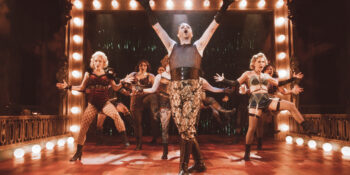
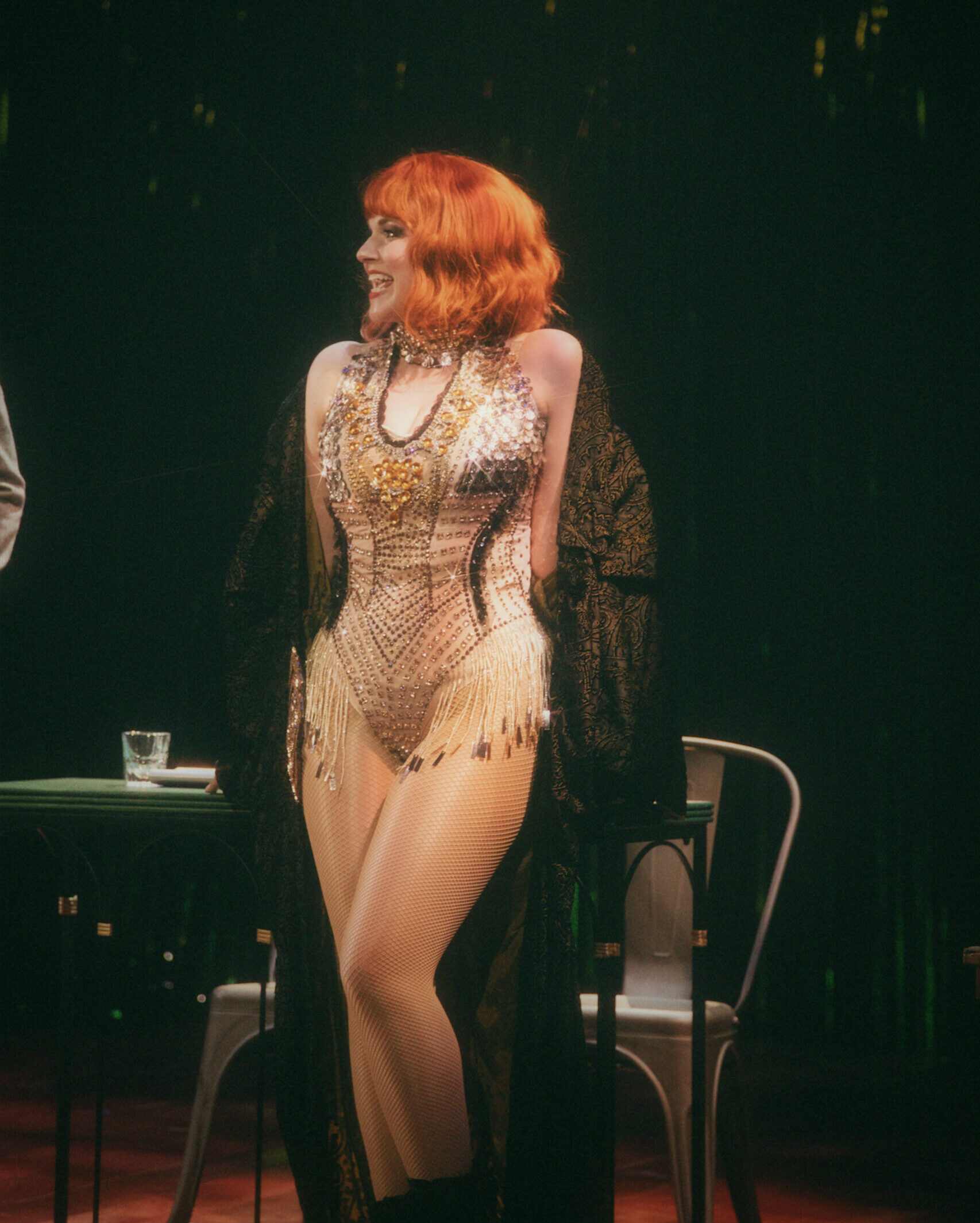
This is Studio Tenn’s first year in their new digs, the Turner Theater. Though a bit difficult to find within the maze of parking spaces, shops, and eateries, it was worth the trip.
In a pleasant surprise, Paul Vasterling, Artistic Director Emeritus of the Nashville Ballet, served as both director and choreographer. Technical matters of getting sets on and off stage were smooth, seamless, and the use of the space, lined with lit globes was masterful, particularly evocative with the first few rows of audience seating arranged with closely spaced nightclub tables and chairs. Though part of the original staging, the scene where characters are within arms’ reach, but still call one another on black telephones seemed offkey. Otherwise, the minimalist set onstage—a bed, a table, a few chairs, all quickly removed—was quite effective; the overall staging was excellent.
Prior to the overture downbeat, Studio Tenn’s artistic director Patrick Cassidy gave a bit of the history of a show that originally premiered in 1966. With each revival, this tale of the hedonistic days in Berlin overlapping with the rise of Nazism in Germany, retains its strength to entertain and move audiences worldwide, winning multiple awards with each incarnation.
Part of its continuing relevance today mirrors the current international zeitgeist where some citizens glory in, and eagerly embrace, the possibility of authoritarianism, while more fear and flee it, as others fiddle as Rome burns, and yet more bury their heads in the sand, deciding to ignore or accept whatever is to be. All this results in, quite simply, a great show. Like South Pacific, Oklahoma, West Side Story, a bigger societal picture shines through the smaller lens of one island, or one region, or one neighborhood. In this case, one nightclub.
The KitKat Club is both a real and metaphorical locus where the Emcee runs the show and two ill-fated couples, Cliff and Sally (an American writer and English showgirl), Herr Schulz and Fraülein Schneider (both Germans: a widowed Jewish greengrocer and a single middle-aged proprietor of a boarding house) meet and separate. Ancillary characters, Ernst Ludwig (Matt Logan) and Fräulein Kost (a smuggler who joins the Nazis and a prostitute working out of the boarding house) represent the impending political and moral threats facing all of Germany.
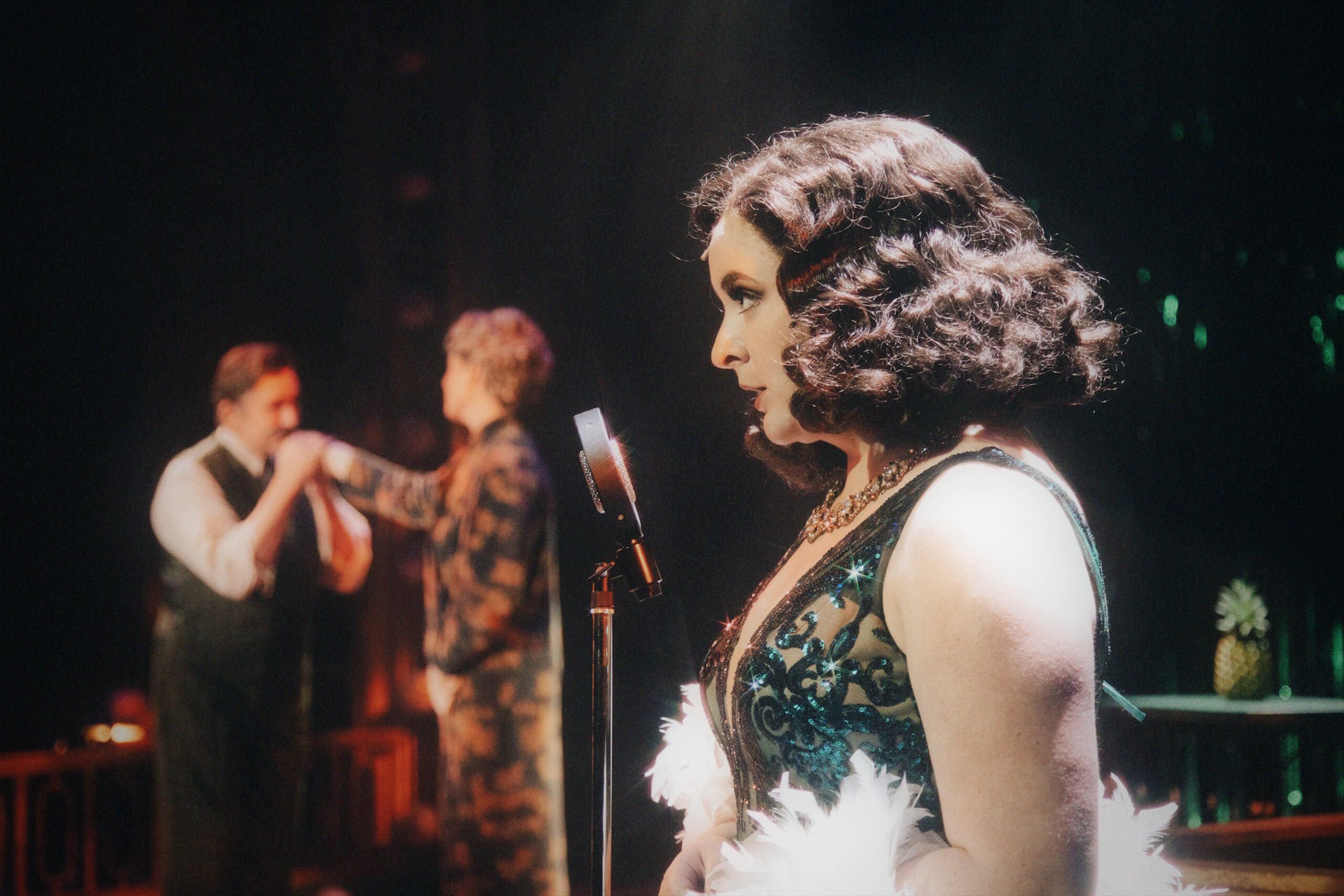
All the voices were strong and effective, matching the quality of the tight pit band (Stephen Kummer, conductor), awkwardly divided onto two sides of the stage. The acting also revealed a depth of talent with the best matches of talent-to-role going to the Emcee (Brian Charles Rooney), Cliff (Caleb Shore), Herr Schultz (Matthew Carlton), and Kost (Jordan Tudor). Their clear grasp of their characters allowed the audience to settle into the story.
Interestingly, despite Vasterling’s deep levels of experience, much of the choreography amplified the most visceral weaknesses in the cast—their bodies. With only one exception, most of the women did not seem to know what to do with their bodies. It may just be transferring a pure classical ballet sensibility to a more carnal environment, but the sensuality of decadent nightclub dancers and licentious ladies of the evening was noticeably absent, as if good girls on rumspringa were trying too hard to be bad. Only Tudor as Kost, had the subtle sexuality that made her depiction of a prostitute convincing.
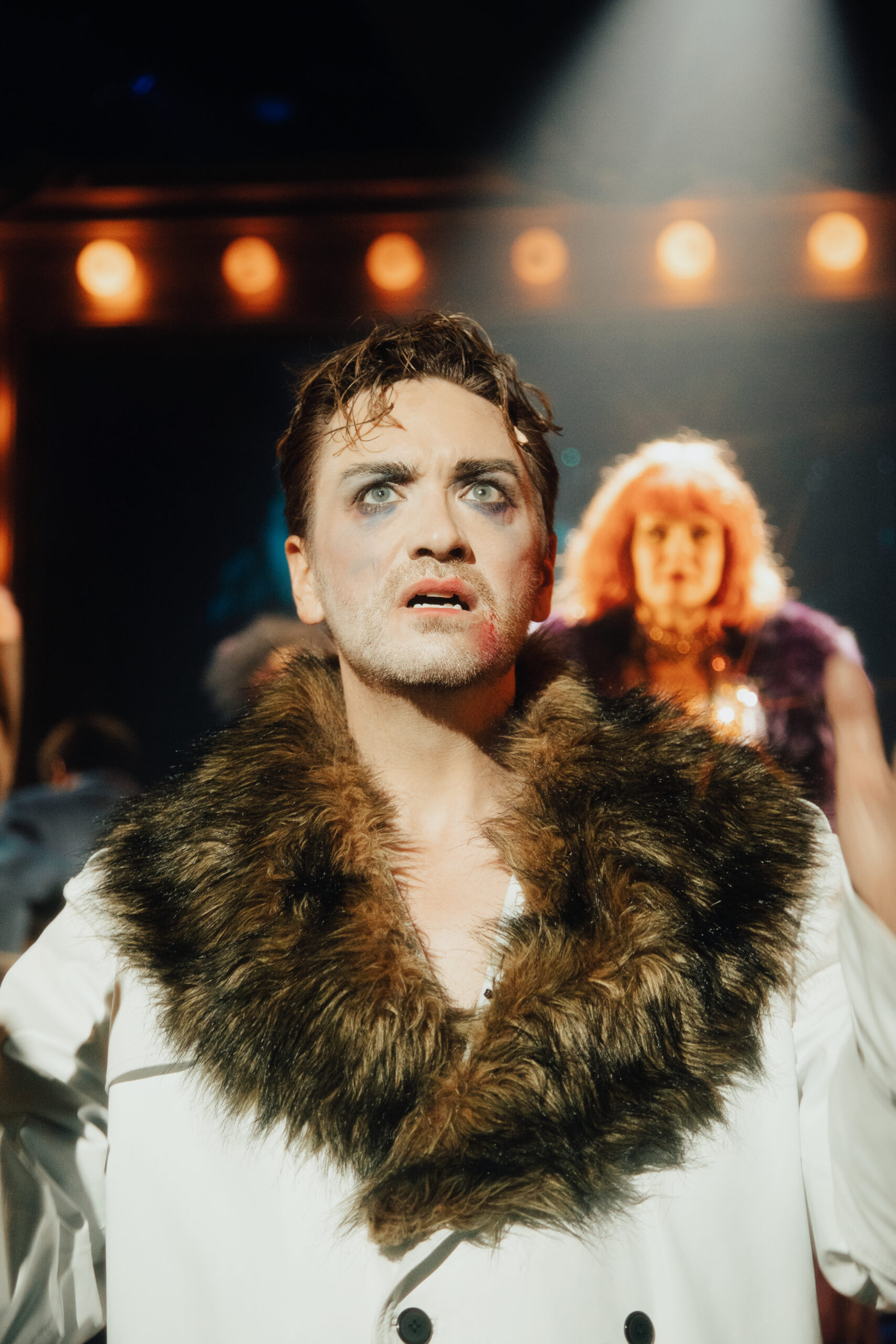
Megan Murphy Chambers, on the other hand, not only didn’t have the English accent the Sally Bowles character required, but was implausible as a “seen everything” showgirl sleeping her way to the top, each undulation approached with practiced determination. When singing major numbers, she and Julie Cardia as Fraülein Schneider both stood rather stiffly as they belted out the show’s potent lyrics in true Broadway style. The quality of their voices was so bold, so skilled, it almost overshadowed the ongoing discomfort I felt at some indefinable absence, some missing element. I was finally able to define it when Rooney sang.
The emcee role was the most challenging both vocally and in acting, going from flirtatious through bored laissez-faire, from sexual hijinks, through growing awareness of the threat against him and his community. At the end, dressed in prisoners’ stripes and a decal representing the Nazi pink triangle, his poignant despair emanated throughout the room. Some nearby audience members joined me in gentle, but audible gasps. Before that, though, when he sang “I Don’t Care Much,” he moved almost as little as Chambers and Cardia, but each move, each head tilt, each hopeless raise of the eyes toward the heavens was so meaningful that the light went on. That is what I’d been missing, the connection of body to emotional moment, acting and singing with your whole self.
In the end, though, this was a well-produced program of solid quality that definitely made for an evening that was both enjoyable and thought-provoking. I hope this company will consider the occasional move past the greatest hits into a play by a local playwright. Perhaps a night of one-acts? Their skill would give talented writers in the Nashville area a serious chance to promote their works, just as the Nashville Ballet allows its dancers to choreograph a talented company. Seeding the growth of a new generation of playwrights would add to the gift Studio Tenn already provides audiences.
This is the final show of the season, but if it is any indication, 2024–2025 Rockin’ Retro season tickets, starting with Little Shop of Horrors and ending with Jersey Boys, would be well worth the cost.
FALL and chatterbird in Collaboration
A Bending of Its Own Kind: Aspiration
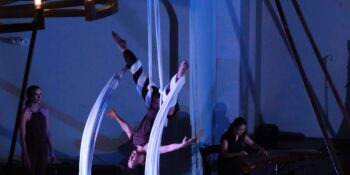
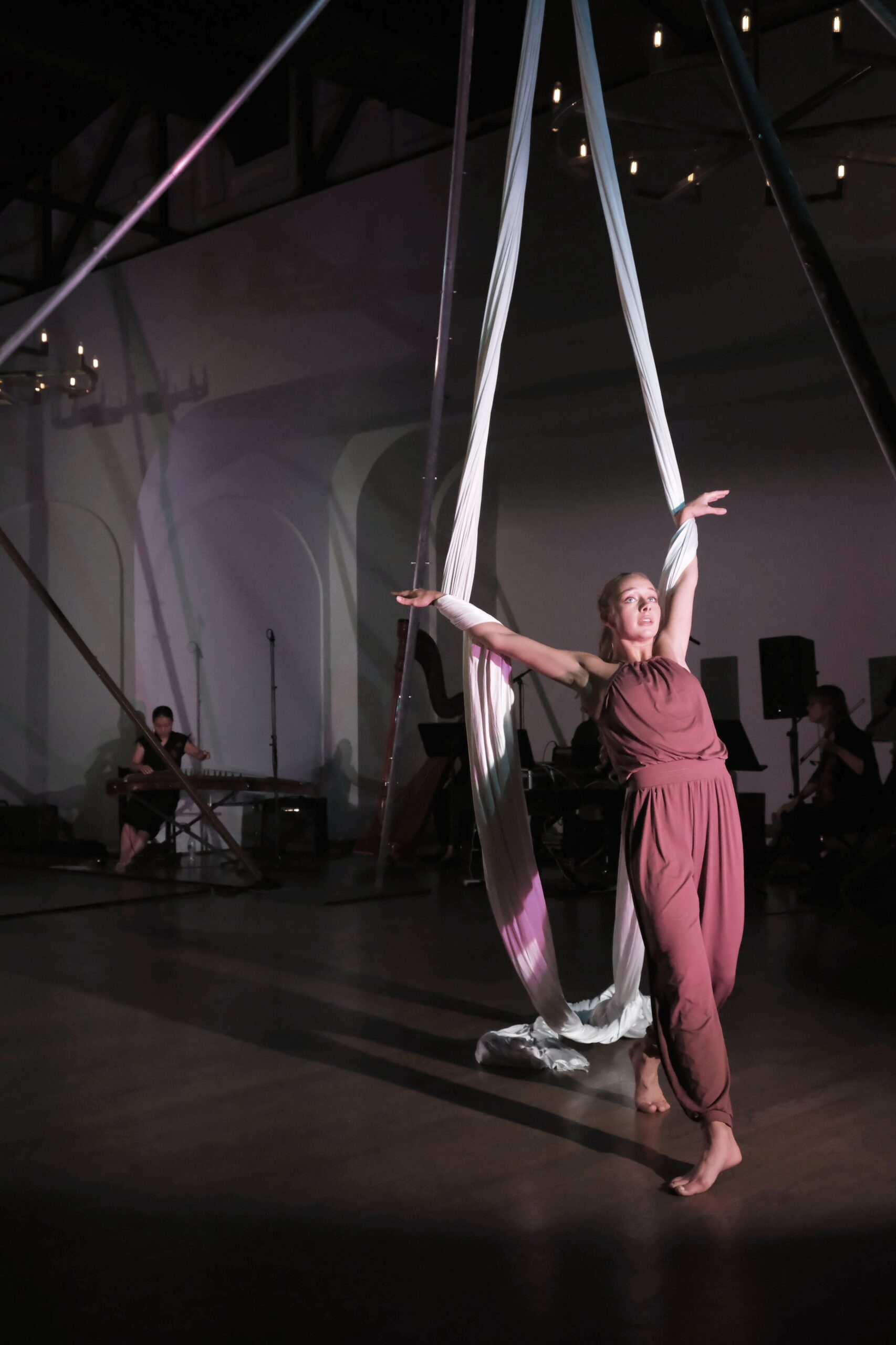
On Sunday May 19th, chatterbird, a Nashville-based chamber ensemble, collaborated with aerial and contemporary ballet company FALL for their latest performance: A Bending of Its Own Kind: Aspiration. Founded in 2014, chatterbird “…explores alternative instrumentation, stylistic diversity, and interdisciplinary collaboration in order to create thoughtful, intimate, and inventive musical experiences.” FALL was founded in 2010 by Rebekah Hampton Barger to articulate the experience of those living with chronic pain and illness. A Bending of Its Own Kind is a dance performance piece created by Barger about her experience with severe scoliosis and chronic pain. As the years have gone on, the piece has expanded to include the stories of other individuals with chronic pain and Aspiration is the latest installment, which explores the connections between hope and breath, and what each of those means in the face of living with a chronic condition. In an interview with MCR, Barger cites a quote by Ted Chiang as inspiration for the title of the piece: “It is no coincidence that ‘aspiration’ means both hope and the act of breathing.” The music and movement for this piece were developed separately, with both choreographer and composers drawing inspiration from a discussion between five individuals who each live with a form of hypermobility disorder, along with several other comorbidities. During this performance, the composers performed a structured improvisation alongside the dancers.
A Bending of Its Own Kind: Aspiration was performed in Emerson Hall, a refurbished 1930’s-era church that had a space for a small ensemble: harp, gezheng (a chinese stringed instrument), violin, bass, and synth and percussion, along with two sets of aerial silks in a large metal frame. The performance included four pieces with four individual dancers: Hope // Breath, Knowledge // Empowerment, Looking Forward // Looking Back, and Grace // Acceptance, and a final work in which the four dancers performed together: Aspiration (in three parts).
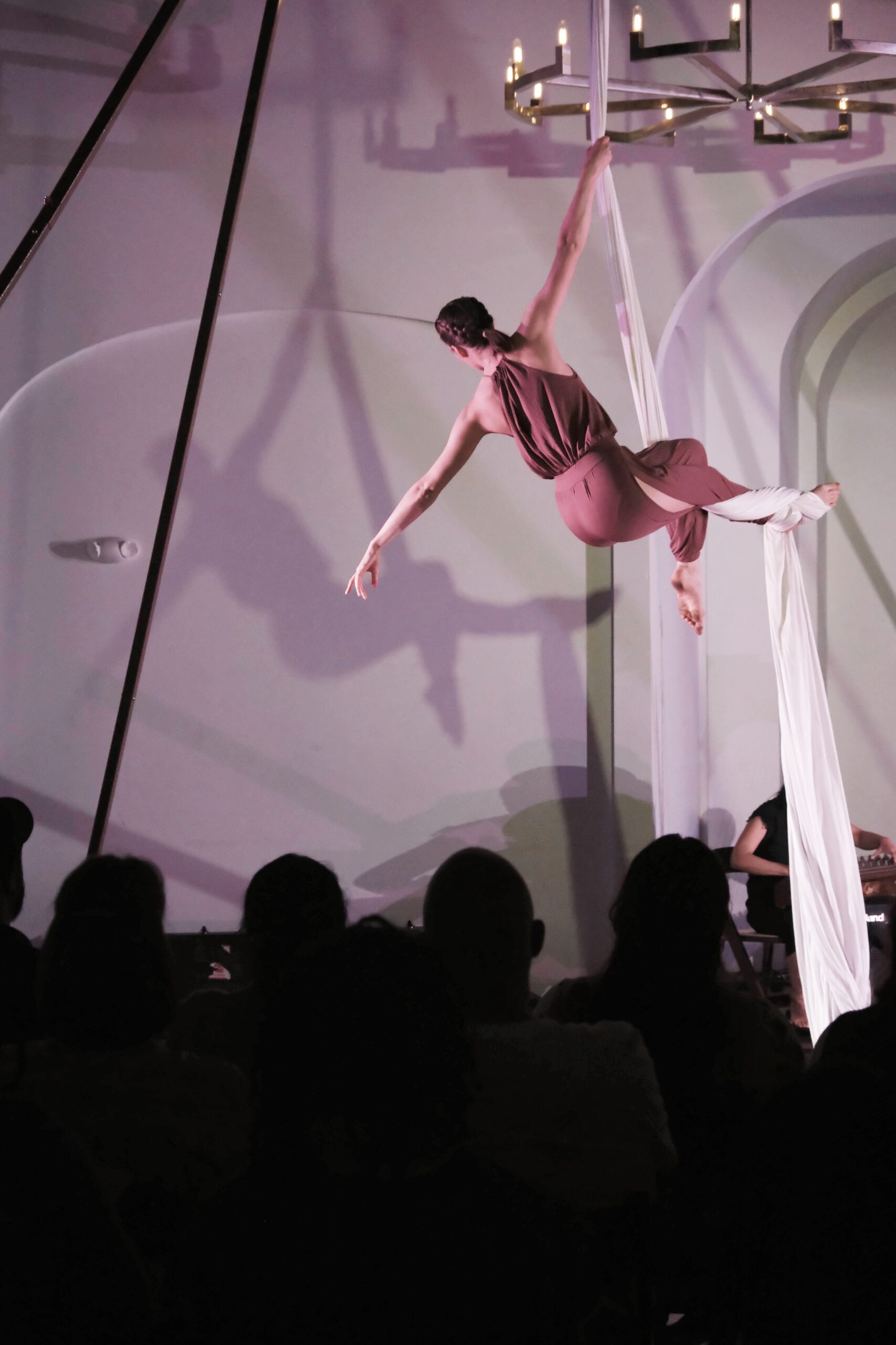
In the first part, Hope // Breath, Marisa Pace danced from one set of silks to the other, lifting them in a way that imitated the billowing sails of a ship. At one point she climbed up the silks and waved her arm like a bird in flight. Light on her feet, Pace beautifully illustrated the idea of hope. Jasmine Clark took over for Knowledge // Empowerment, climbing the silks and standing with her back straight, tall and in charge. She even moved the silks in such a way that she looked as though she was swinging effortlessly on a swing set. In Looking Forward // Looking Back, Alex Winer moved back and forth from one set of silks to the other, seeming to get stuck in the past, although reaching forward to the present. The struggle in reconciling the past with the present was evident in Winer’s frantic movements. Josie Baughman enters while Winer is still wrapped in the silks of the past, and frees her before starting the final piece, Grace // Acceptance. Baughman moves powerfully, climbing the silks and throwing her arms wide, embracing her reality. There is peace in this final work.
Aspiration (in three parts) begins with the sounds of slow breaths with all four dancers struggling to breathe or perhaps breathing through incredible pain. The jerky movements include strange positions with arched or curved backs and arms pressed against chests as they fight for breath. They move into frenetic dancing as they throw and twist the silks in a way that is almost opposite of the beautiful, soft billows of the Hope // Breath. At some points the dancers are in sync and at others they seem to be working against each other, until they begin to lean on each other. The poignant beauty of them holding each other up reminds the audience that we must help each other, love one another, and uplift one another. Those with chronic pain rely on each other for understanding, compassion, and assistance.
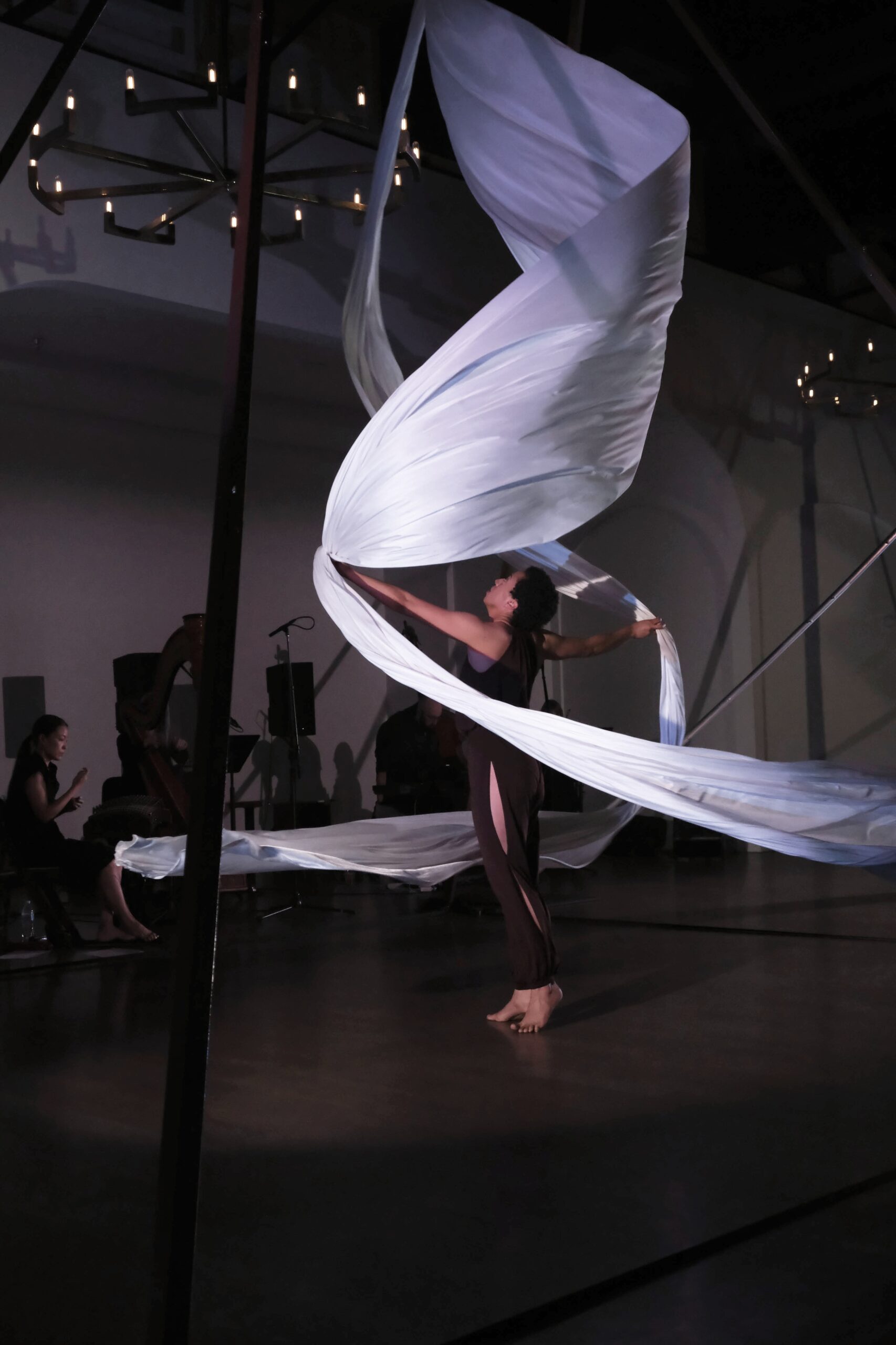
The music was unobtrusive, providing a background meant to enhance rather than overcome. Because these are structured improvisations, there was a “sameness” to the works, one piece blending into the next. I believe some of the dramatic effect is lost during improvisation, as they are unable to punctuate specific moments in the dance. However, the overall affect was beautifully dreamy, especially as night fell and the light coming in through the windows faded. Wu Fei on the guzheng in particular contributed to the ethereal nature of the pieces. Other members of the ensemble included: Timbre Cierpke on harp and vocals, Annaliese Kowert on violin, Paul Kowert on bass, and R. Aaron Walters on syth and percussion. As someone that struggles with a chronic illness on a daily basis, I was so grateful for this work and its exploration of chronic pain and illness. I particularly liked how the dancers embraced the painful or difficult moments, and still were able to find joy and peace.
Did you miss the chance to see this performance? I have good news for you: the musicians’ performances will be captured and incorporated into a performance of the full-length production of A Bending of Its Own Kind on June 1 and 2 in Knoxville, TN, hosted by Dragonfly Aerial Arts and Circus Studio.
A review of POTUS: Or, Behind Every Great Dumbass Are Seven Women Trying to Keep Him Alive
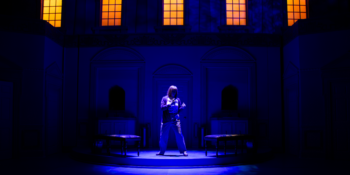
Nashville Repertory Theater closes its 39th annual season in a promising and open-ended tone with the staging of POTUS: Or, Behind Every Great Dumbass Are Seven Women Trying to Keep Him Alive. Before I start reviewing the show, I would like to clarify that my reference to the assumed/assigned genders of the characters is based on the official descriptions made by the playwright and the team that has realized the staging of this play.
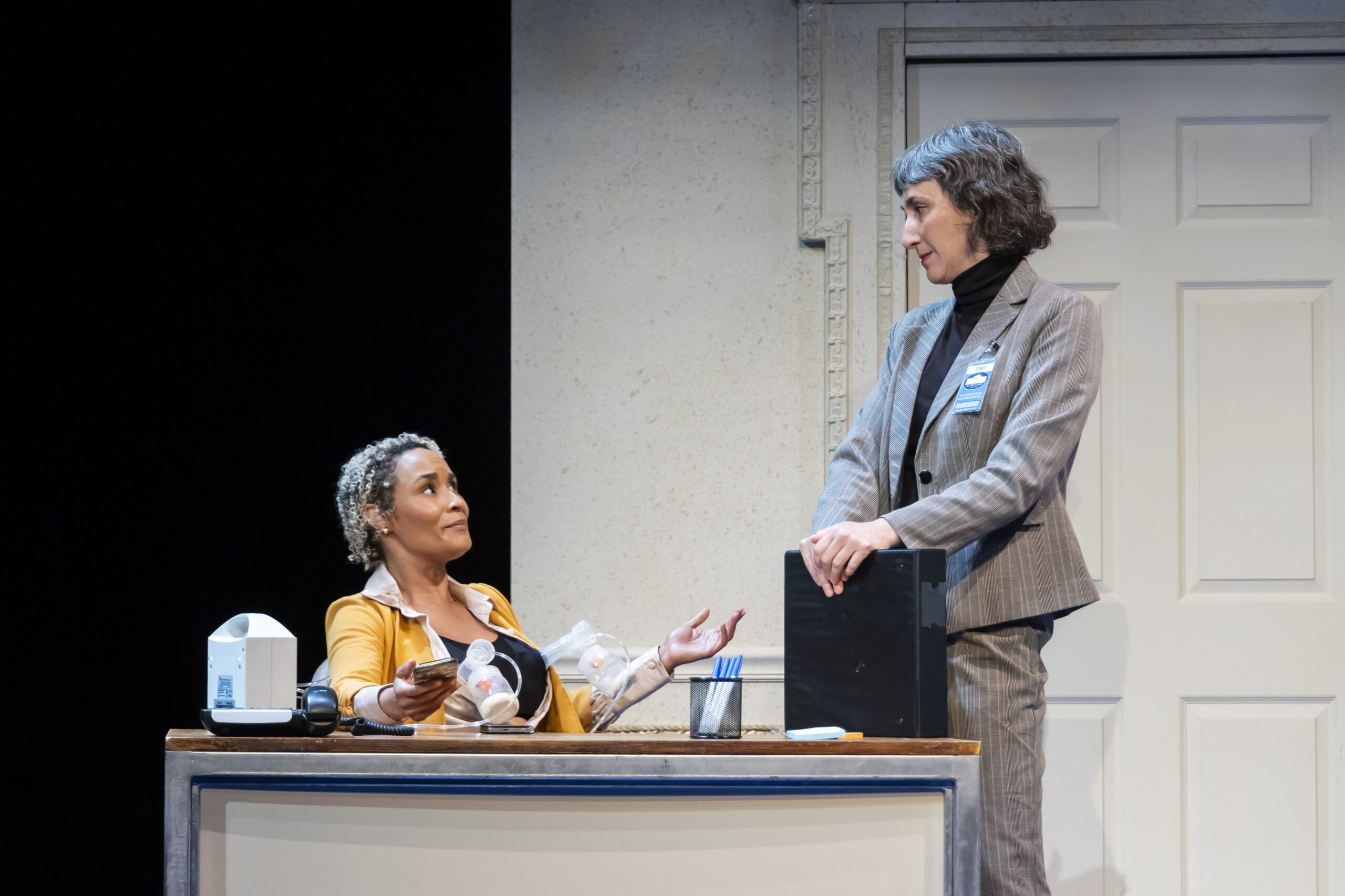
Selina Filinger’s 2022 play is a farce where seven exceedingly witty women pan out in clumsy actions and humorously embarrassing events. They are all closely related to the president of the U.S. but that is not the only thing they have in common: POTUS makes an unforgivable sexually denigrating gaffe towards the first lady, one that snowballs the already fragile global political relationships and the seven of them will put everything they are and ever wanted to be at risk, to save the president’s reputation. As they try to pull the most powerful man in the United States out of the gutter that may have repercussions on world peace, they reinforce their own denigration and oppression, while each of them is in fact much worthy and capable of being the president of the country themselves.
Director Lauren Shouse who introduces the play to Nashville audiences, forwards Selina Filinger’s dedication of the play to “any woman who has ever found herself as the secondary character in a male farce.”
It is rather tragic really, to see these seven bright women chasing their tails around the stage, trying to cover up for a ubiquitous man whose only physical presence is that of his lustrous black shoes. The play is staged in two parts, with a 15-minute break in between, which offers enough time to imagine the direction the show will take during its second part. Do we anticipate the animosity between these women to wrongfully confirm the hysteria etiquette historically labeled on women as a weakness, utilized to keep them away from important leadership positions or is the play going to take a more optimistic turn?
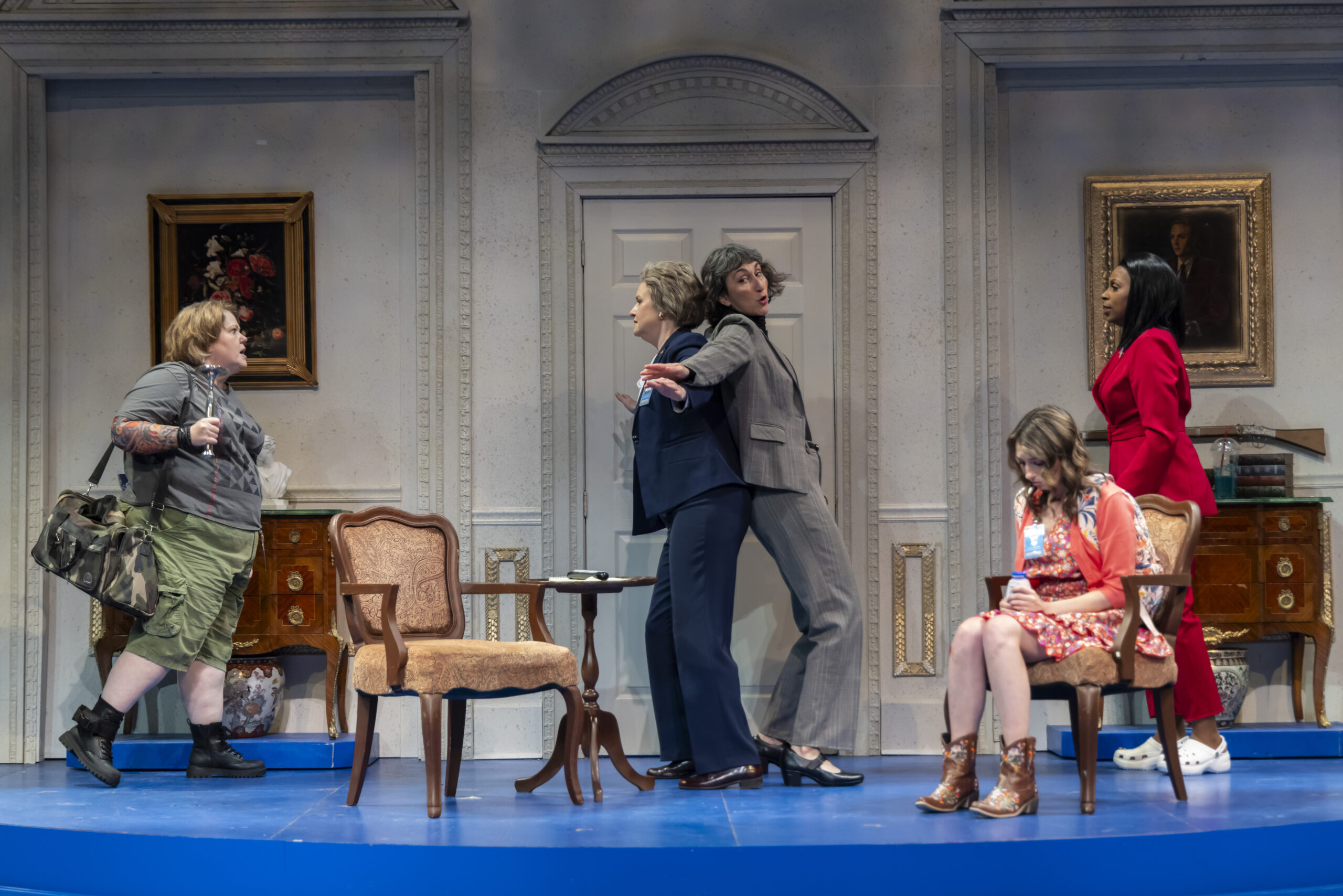
In terms of staging, the crescent moving stage walls representing the inside of the White House, designed by Gary C. Hoff as well as the snapping instead of sliding blue-ish lights designed by Darren E. Levin enable the short scenes to sink in and flow with a smooth tempo while allowing the audience to delve into laughter.
The first lady, Margaret, played by Tamiko Robinson Steele, is brilliantly cynical due to being overqualified yet diminished to hosting sumptuous events . Chris, played by Kris Sidberry, a black journalist determined to advance in her career while a single mom of twins, bitter sweetly running around with milking pumps dangling from her top, corners and criticizes Margaret (written to be played by a black woman) as not caring about black women’s struggles, but Margaret answers something along the lines of “I don’t subscribe to identity politics”. These are very interesting threads of potential discussions that unfortunately don’t get developed in the play, as the focus is sucked by the omnipresent but physically absent POTUS.
Lauren Berst is very believable as the chief of staff Harriet, an octopus of a woman, trying to cover up for multiple diplomatic cracks from behind the scene, while Jean, the president’s handler, played by Tamara Todres appears to be on top of her game, until her achilles heel, her ex-lover Bernadette, president’s sister shows up. Bernadette, played by Rachel Agee, an ex-convict waiting for the presidential pardon, infiltrates misdemeanor in what is supposed to be the exemplary house of the rule of law.
The sound of the show, designed by Sara Johnson adds an enriching texture to the slapstick short scenes. Pop feminist songs juxtaposed by patriotic rock songs interpreted by Dusty (Quincey Lou Huerter), the farm girl, fortuitously entering the White House drama and the insecure yet ambitious Stephanie played by Darci Nalepa Elam, add much spice to the show.
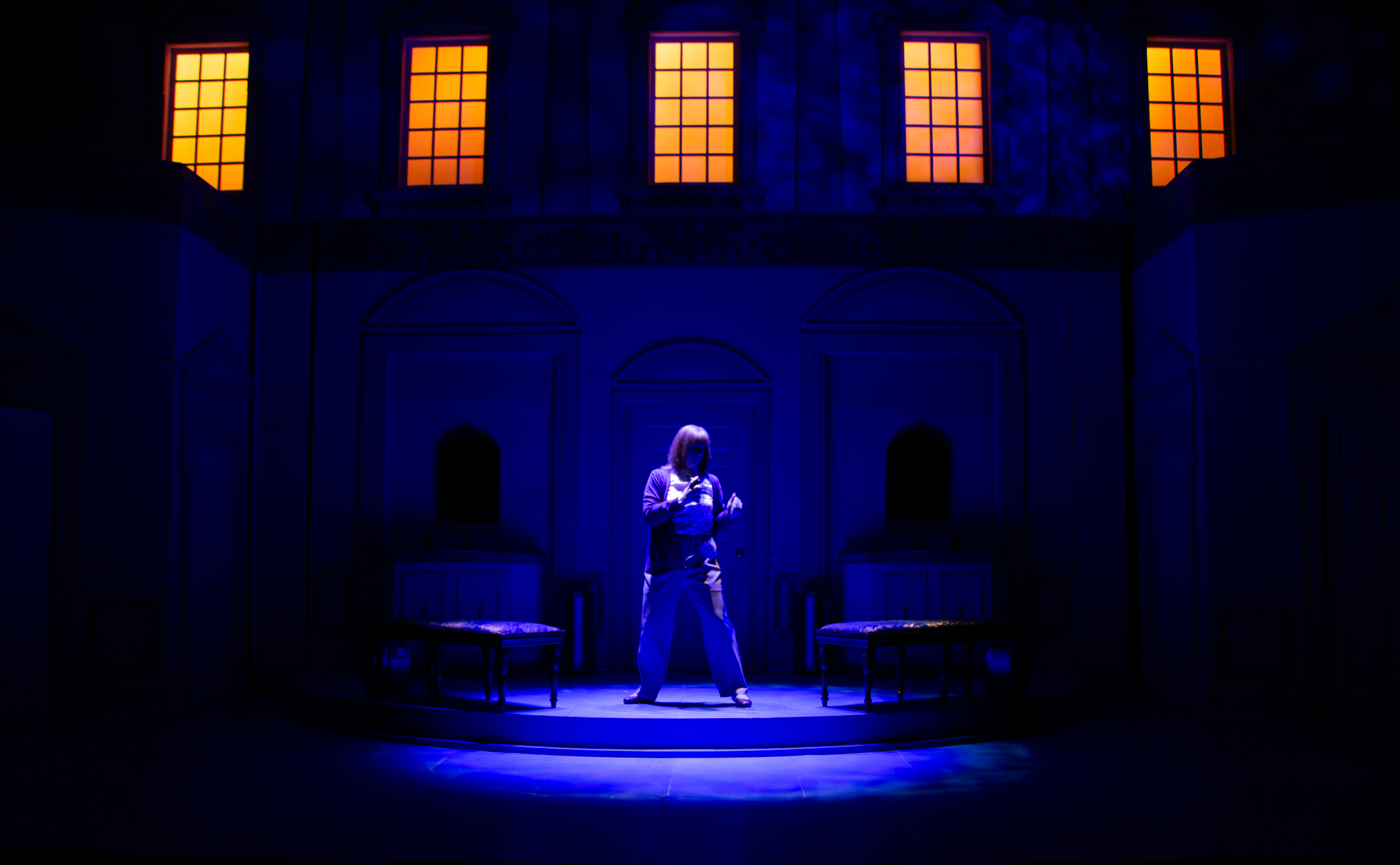
The negligent annotations among the characters about their haircuts or the costumes they are assigned to (designed by Melissa K. Durmon), not sparing here POTUS’s crocs slippers, may be read as a reinforcement of the stereotype but they may also be read as a critical commentary on the judgmentalism of appearance among women. In his essay on art criticism, English art critic, novelist, painter and poet John Berger writes “Men look at women. Women watch themselves being looked at.”
At the end of the play, the seven women unite, realizing they can only stand against the patriarchy together. Their gaze is turned towards the audience. They are not watching themselves being looked at; what they see is their future selves, taking over.
I often feel conflicted about laughing at serious issues, on the other hand, laughter is a way for humans to ridicule themselves and this surely is healthy for the ego. The show was utterly entertaining, and it brought lightness to the quite heavy topics it elaborates.
From Our Far-flung Correspondents Series:
“Colorado Symphony – A Mile Above with Smyth, Prokofiev, and Brahms”
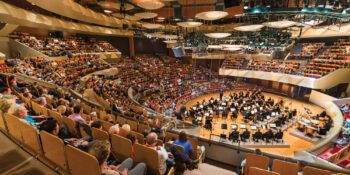
Performing at 5280 feet above sea level and giving at least 5281 reasons to fall in love with the Colorado Symphony, the music of Ethel Smyth, Sergei Prokofiev, and Johannes Brahms dazzled.
Celebrating its centennial artistic season, the Colorado Symphony is the only full-time professional orchestra in the greater Denver region. Presenting performances in various categories – Classics, Symphony Pops, Spotlight, Family, Holiday, Movie at the Symphony, and Alternative – the organization strives to fulfill its mission of being, “The future of live, symphonic music.”
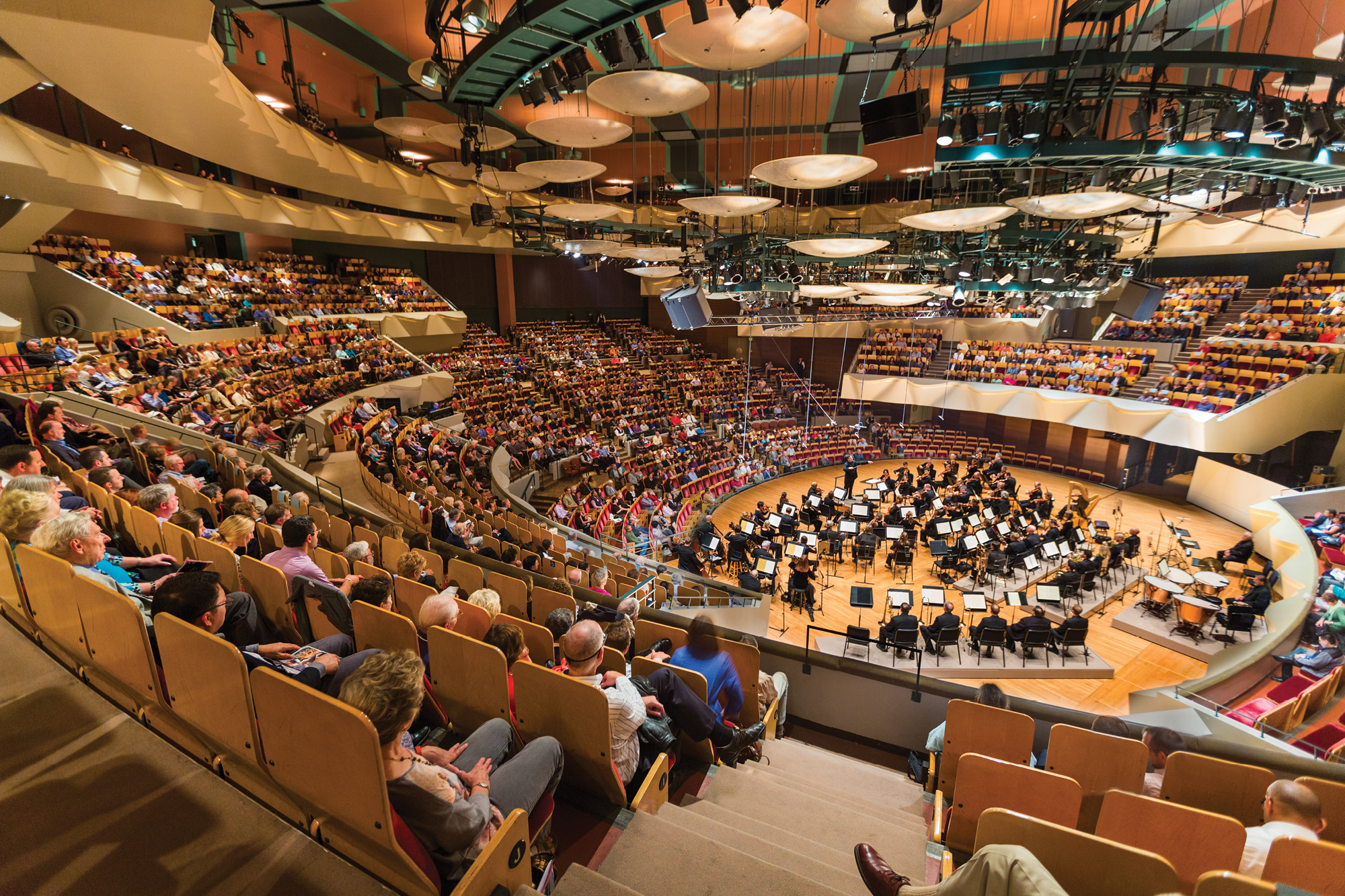
The Colorado Symphony’s primary residence is Boettcher Concert Hall. Built in 1978 and renovated in 1993, this venue is part of the Denver Performing Arts Complex, which also houses the Colorado Ballet, Denver Center for Performing Arts, Opera Colorado, and various national acts, local groups, festivals, conferences, and public events. Boettcher Concert Hall is the nation’s first symphony hall constructed in the round, resulting in 80% of the audience seats being within 65 feet of the stage. The seats themselves are also unique, having been designed with steam-bent plywood that acoustically simulate a full house regardless of actual audience size.
Before concerts within the Classics Series, violaist Catherine Beeson prepares interested patrons with a lecture that introduces the music soon to be heard in performance. Beeson makes materials available cited within her lectures, called Preludes, on her personal website within the Cool Nerd Stuff section. For this concert, Beeson crafted a thread through the program’s three pieces, the genesis of the lecture taking inspiration from High Anxiety, the psycho-comedy starring Mel Brooks.
Catherine Beeson is a perfect guide, able to introduce novices to concert music, while still providing enough content for those more learned – and all of this while making connections to current societal happenings. For example, Beeson referenced the current rap battle between Drake and Kendrick Lamar before introducing the following nuance about Johannes Brahms’ Symphony No. 3 and his well-known feud with Richard Wagner:

Random drama for you to chew on: Even though Brahms respected his work, he and composer Richard Wagner had a pretty nasty public feud going on, and even though Wagner died months before Brahms composed Symphony No. 3 the fur was still flying in the community so much so that Wagner supporters tried to wreck the Symphony’s premiere.
Random conspiracy theory for you to chew on: In his Symphony, Brahms included a musical quote from Wagner’s [Chorus of Sirens]. The spot on the Rhine River where Brahms composed the Symphony is also very near the infamous Lorelei rock cliff, named after the siren-like water spirit that lured sailors to crash their ships. Was [Brahms] honoring Wagner’s composition skills, mocking his death, OR WAS HE PREDICTING ETHEL SMYTH’S 1904 OPERA THE WRECKERS AND THIS WEEKEND’S PROGRAM LIKE A SYMPHONIC NOSTRADAMUS. You be the judge.
Shortly after Beeson was done preparing our listening, the Colorado Symphony took to the stage wearing all black, contrasting guest conductor Jun Märkl, who wore white tie and tails. Märkl serves as music director of the Indianapolis Symphony Orchestra and Taiwan National Symphony Orchestra, will become the chief conductor of the Residentie Orchestra the Hague beginning in 2025, and performs as principal guest conductor of the Oregon Symphony. The Colorado Symphony played well for Maestro Märkl throughout the evening; perhaps the aforementioned disconnectedness with respect to wardrobe didn’t penetrate the artistic relationship between conductor and ensemble.

Opening a concert with Dame Ethel Smyth’s “On the Cliffs of Cornwall,” Prelude to Act II from The Wreckers was an interesting choice; however, a choice seemingly fitting of a composer who defied convention to the point of becoming an imprisoned suffragette. Some have submitted that the opera The Wreckers is thought to be the most important English opera composed in the 300-year period between Henry Purcell and Benjamin Britten. Principal oboist, Peter Cooper, and Michael Thornton, principal horn, helped support such a submission with the solo melodies they offered that became increasingly enticing as the work developed. The Colorado Symphony played with such sensitivity to ensemble balance, often replicating what has become expected of an audio recording that has undergone post-production editing.
The second piece offered was Violin Concerto No. 2 in G Minor, Op. 63 of Sergei Prokofiev, with soloist Stefan Jackiw. This season alone, Jackiw is scheduled to perform with the New York Philharmonic, Taiwan Philharmonic, and the China National Symphony, in addition to presenting multiple world premieres at Roulette, curating a series of programs for the Edinburgh Festival, and making a debut with the Junction Trio (Conrad Tao, piano; Jay Campbell, cello) at Carnegie Hall.
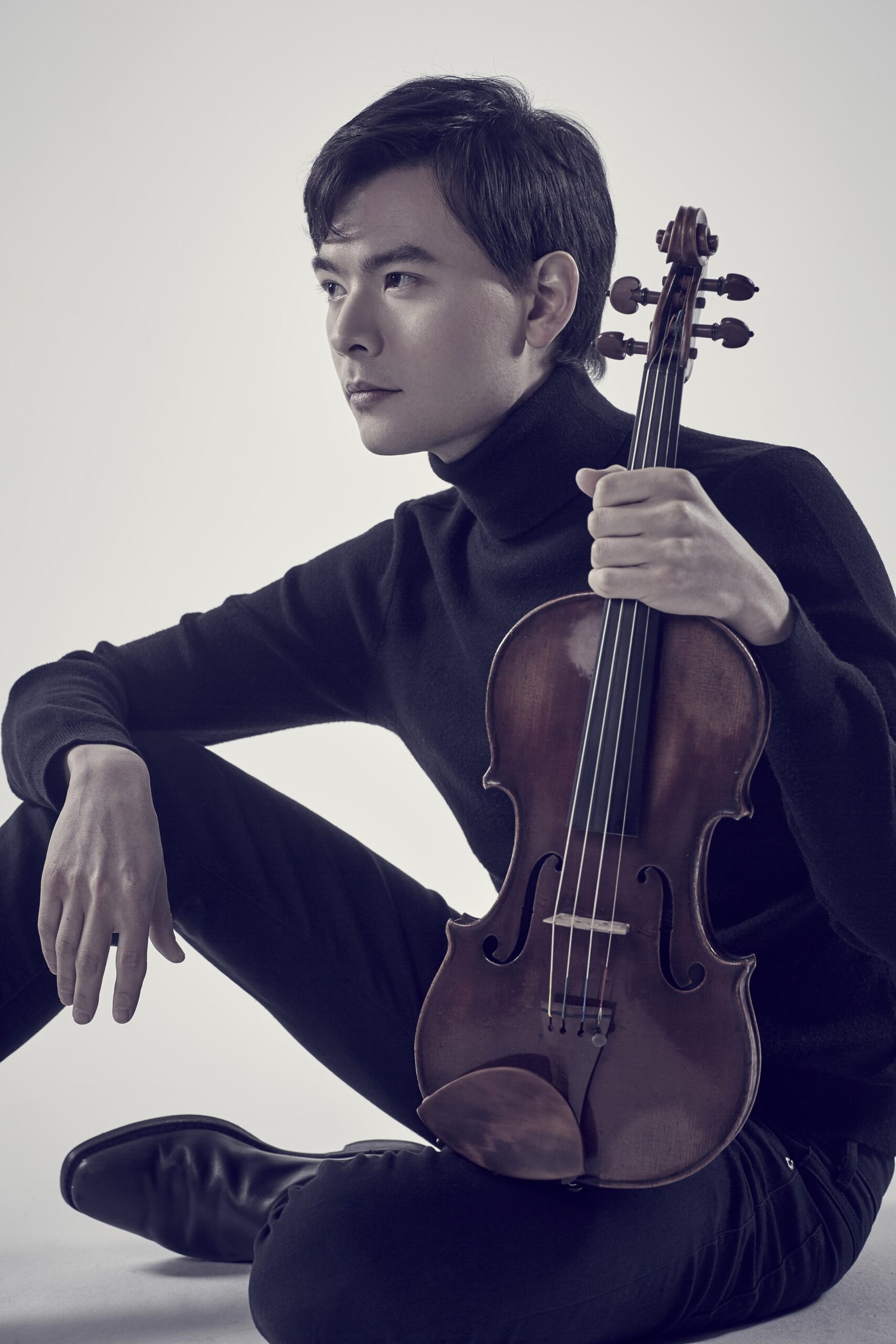
Jackiw’s intonation was impeccable and matched by the flute-oboe-clarinet sections throughout some rather exposed moments. The bassoon playing was equally impressive, although decidedly more present than what may have been expected. Maestro Märkl often asked the ensemble to play quietly to powerful affect, but when then asking for a more present volume, the result seemed to be an out-of-portion dynamic cliff that was navigated less gracefully in order to be achieved. Stefan Jackiw’s technical abilities towards the end of the Concerto were hypnotic with precision, much like the way musicality oozed from his soul throughout the 2nd movement. A final accelerando to end the composition left some in the orchestra catching up, but a tempo risk that should continue to be encouraged, nonetheless.
The Colorado Symphony ended the concert, or so the program suggested, with Symphony No. 3 in F Major, Op. 90, by Johannes Brahms. This worked proved to be the highlight of the program, in part to the way in which the cello section contributed to the composite. Seoyoen Min, who performs from the Fred and Margaret Hoeppner Principal Cello Chair, led powerfully throughout tutti melodic moments in the 3rd movement. Credit should also be given to principal trumpet, Justin Bartels, for using rotary trumpets on this piece. Brahms composed an ending that recedes in both activity and dynamic. The pacing of this section, in particular the final release, felt a bit abrupt. Fortunately for concertgoers, a planned encore of Brahms’ Hungarian Dance No. 5 left all happily bouncing out of the concert space.
Following performances within the Classics Series, conductors and/or soloists make themselves available for a question-and-answer session with audience members interested in extending their experience. Both Maestro Märkl and Jackiw participated, thoughtfully responding to a variety of questions about both the music and their lives. From the Prelude with Beeson, the performance, and the Talkback with conductor and soloist, one can quickly become rather invested to the Colorado Symphony – even more so when one is able to share such a thorough experience with someone special, as I was able to do with my first band director, Gary Hoffman.
It feels appropriate to offer the idiom that the sky is the limit for the Colorado Symphony, but the group already performs in the sky. To infinity and beyond, then, for the Colorado Symphony!
Frozen: Perfectly Fine
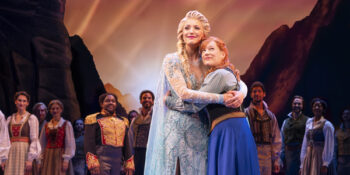
The film this musical is based on was such a hit in 2013 that anyone alive then or since then is at least aware of it, its characters, and can hum “Let it Go.” I’ve seen near infinite Frozen merchandise over the years, ranging all the way from boxed Mac & Cheese to men’s sweaters. I was a teenager when it came out and saw it in theaters with friends, enjoyed it and even bought the album off iTunes (possibly the last digital album I ever bought). In this review I’m going to assume that you’re seen it, because if you maintained the effort to avoid seeing it for the past eleven years you’ll have no interest in this review anyways.

Disney took its time making the adaptation, which made its Broadway debut in 2018, continuing until the COVID lockdown. The North American Tour began in 2019 and continued after the COVID interruption, playing its 1,000 performance earlier this year. Jennifer Lee, who wrote the film, did the book, and the original song-writers for the film, husband-wife duo Robert Lopez (co-creator of The Book of Mormon) and Kristen Anderson-Lopez wrote the new music for the Broadway adaptation, promising at least the potential of equally good songs.
Before going in to see it, my greatest hope for the Broadway adaptation was that the notable lopsidedness of its music would get balanced: the first half of the movie has seven fabulous songs, some almost back-to-back, yet the second half has only two, one of which is a reprise. Perhaps the plot would get fleshed out a little too: they’re orphaned as children and Elsa isn’t crowned until she comes of age, but there’s no a regent, or even anyone in an authority position. There’s nobody to take the command of the land when the princesses disappear except for some random foreign prince who is unofficially engaged to the younger princess. I also hoped Kristoff would be likable, his personality expanded beyond being a crude masculine stereotype.
The adaptation doesn’t give new depth, but parts are changed: Elsa is shown to have a little more compassion and care for others. Kristoff is indeed improved, now a somewhat brusque but kind and independent man who is an outsider rather than a loser. Hans is also better, maybe because they didn’t give him those creepy sideburns. The scheming ambassador from Weselton still basically does nothing, but is funnier. Sadly, though, Anna (my favorite character in the film) is now slightly annoying. Most notably, there are no rock trolls, but “Hidden Folk,” rustic people half-dressed in wild nordic furs. It’s an understandable choice, but it would have been delightful to watch a lavish puppet show for the trolls (the animated trolls do have a rather Muppety look). Instead, the Hidden Folk deliver the same lines while doing a squatting-swaying movement in an attempt to convey wildness.
The adaptation tries to add a few jokes for the parents by adding clumsy innuendos. Anna’s song “For the First Time in Forever,” has its tone shifted by these jokes, from being joyful and hopeful to a little, well, horny: Anna strokes a bust of a man’s muscular torso, and then later, when singing with Hans, puts her flat hand on his chest and slides it a few inches lower towards his crotch. It is unexpectedly awkward. This isn’t helped by the fact that the woman playing teenage Anna is clearly an adult. Usually innuendos make me chuckle, but these annoyed me, probably because they change the tone of the innocent Disney brand fairy tale.
Obviously, the music is a big part of the musical, particularly the new songs created specially for it. It was an impossible task. To begin with, most viewers are lovingly familiar with all the songs from the movie. So how can you insert new songs in the same story and not have them feel like interlopers? The new music is fine, but not particularly memorable, and at times feels a little retro-80’s pop unlike the film’s music. One musical choice I actively disliked was the replacement of the “For the First Time in Forever (Reprise)” when Anna finally confronts Elsa in her ice castle. It’s such a thrilling musical moment with an expert blending of their two contrasting melodies, and it was replaced with an unfamiliar song communicating mostly the same thing, except now without Anna. At least now the number of songs in the second act make it feel more balanced, as I had hoped.
The musical’s special effects have been talked up, and they aren’t bad. Most of the effects are flashes of light, sprinklings of snow, and well-designed projections casting a limn of frost over the stage. A few moments are surprising, ice-like confetti appearing from unexpected places, or when young Elsa and Anna build a moving Olaf from toys in their bedroom. My favorite effect is at the end, when Anna is frozen. The ensemble has been dancing around in all-white attire, personifying the blizzard, and suddenly they join her, draping a massive cloth over her and themselves. At that moment they become motionless and the projectors blast a perfectly designed image of frost over them. They truly look frozen. The moment that got the biggest gasp from the crowd is during Elsa’s “Let it Go.” In the film there’s a moment when she magically transforms her dress. Here they have her on a high portion of the stage and she dramatically throws her arms down to have the dress suddenly ripped off to reveal a sparkling dress underneath.
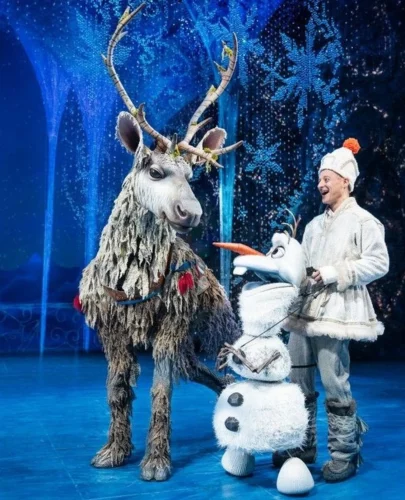
The special effects and costuming meet to create Olaf and Sven. Olaf, the dismemberable snowman, is a large chest-high puppet, attached to the actor playing the role. He moves the mouth and hands of the puppet, and the Olaf’s feet are attached to his own. The actor wears an all-white Scandinavian outfit with a funny hat. The puppet is fun to watch, and you can see the actor’s face for more detailed expressions. Sven, whom I found boring in the film, is the coolest thing on stage. The detailed design is cool, with an animatronic look and movement to its features, but containing a person who nimbly walks around on all fours. I found myself staring at Sven every moment he was on stage. To see a quick montage of the costume, piece by piece, see The Secret Life of Sven – The New York Times.
The costumes are lovely and lavish. Even the common people’s attire have many layers of cloth, which they use as they dance to create added movement. The ensemble’s choreography is fun, especially at the ball, but the main characters generally just stand and sing. The new song to start off the second act, “Hygge,” involves a goofy “nude” chorus line of sauna-goers who always manage to cover themselves up with tree branches, and it got a lot of laughs.
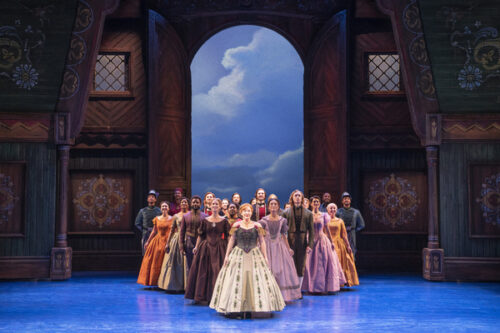
The set pieces are great, massive and with layers giving added depth to the stage. The backdrop is a large screen, and it’s used exactly as it should be: as a backdrop. It works well with the set pieces and deftly joins in with the special effects of frost and snow. My favorite set is the castle, with its attractive wood walls and designs.
I saw the show Wednesday, May 8, so the audience was smaller than it would have been had there not been tornadoes. A large swathe of the crowd was families with children, boys and girls. Most of the girls were in some degree of Elsa attire. I discovered that TPAC has booster seats for Jackson Hall. The kids behaved well, although at one point, when Olaf sings his song “In Summer,” there’s a classic joke, “Winter’s a good time to stay in and cuddle, but put me in summer and I’ll be a [comical pause] happy snowman!” Some little boy towards the front yelled out “Puddle” with uncontrollable enthusiasm in that moment of quiet and got everyone to laugh, including Olaf. During intermission kids were hyper and happy: the show kept them engaged and they seemed to enjoy it a lot. The musical is barely longer than the movie, and that is counting the one twenty minute intermission.
Caroline Bowman does a fantastic job as Elsa (a must when we’re all familiar with Idena Menzel’s version). Lauren Nicole Chapman has a strong, capable voice. Nicholas Edwards makes the best version of Kristoff, a marvelous singer and a winning actor. Preston Perez makes Hans actually charming and I wish we could see more of his villainous side. Jeremy Davis is eminently likable and has perfect comic timing as Olaf, puppeteering smoothly. Weselton is played by Evan Duff, who makes the character’s bad dancing hilarious. Dan Plehal played Sven the night I attended with impressive agility.
I took a lot of space here to say something simple: the musical is a solid adaptation of an excellent children’s film, and it faces all the usual limitations of adapting from animation to live action. Too big to fail, Frozen: The Broadway Musical would be a hit even if everyone involved completely dropped the ball. Luckily, they didn’t. Adults will find it good enough, superfans will automatically love it, and the kids will really enjoy it. For children new to Broadway Frozen could be a good way to start their experience.
Frozen will continue at TPAC’s Jackson Hall through May 18. For tickets and more information, see Disney’s Frozen | Broadway Shows in Nashville at TPAC or Disney FROZEN | The Broadway Musical.

